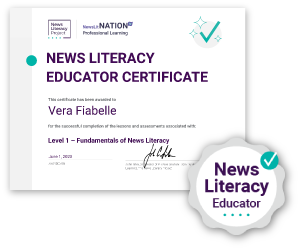NLP commits to systemic change in education
In my life before NLP, I was a middle school teacher, and later, a school district superintendent. These experiences were ideal preparation for doing the important work of ensuring news literacy is a national education priority.
In fact, there is a direct through line. Let me explain. When my eighth grade U.S. history students walked into the classroom, they would immediately see a large, colorful sign with one page of construction paper for each letter — THINK!
I would stand next to this sign each day and ask them questions. I didn’t realize it then, but I was challenging them to fill in the gaps of their education by asking them to think more deeply about their answers. At that time when test scores and test prep ruled the academic day, we weren’t expected to teach students to think critically. And we still don’t. That puts students at a disadvantage for life and fails a principal mandate of public education: to prepare students to be active, critically thinking members of our democracy.
NLP has led the way to help change this, and over the past year we’ve felt a renewed urgency to turn our full attention and resources to helping educators align what happens in the classroom with events in the real world.
I’m excited to announce that we have made a strategic pivot that tightens our focus on bringing systemic change to public education at a national scale. Our ultimate objective is nothing less than ensuring that news literacy becomes required teaching in all 50 states. As important and rewarding as our recent initiatives with the broader public have been, we knew we would have to restructure our work to fully leverage our expertise on this urgent initiative. Our strategic framework spells out how we will achieve this.
Partnering with Los Angeles school district
Earlier this week we took a major step toward this vision. With a three-year, $1.15 million grant from The Eli and Edythe Broad Foundation, we are partnering with the Los Angeles Unified School District (LAUSD), the second largest school district in the United States, to ensure that all students learn news literacy skills and concepts before high school graduation. LAUSD also will join NLP’s News Literacy District Fellowship program, a nationwide initiative that supports school leaders to design and implement district-wide plans for news and media literacy education that currently impacts over 1 million students in 13 states.
Together with LAUSD, we will pioneer a blueprint for news and media literacy education not just for California, but also for districts across the nation, as legislative efforts to require media literacy education gain momentum around the country.
Oh, and about that through line: As a young teacher I knew that my students didn’t need to take more tests to succeed in whatever path they chose. They needed to learn to think critically. I still believe this, and at NLP, we plan to make it happen.
NLP partners with LAUSD, Broad Foundation to create national model of news literacy learning
The Eli and Edythe Broad Foundation has awarded the News Literacy Project, the nation’s leading provider of news literacy education, a three-year, $1.15 million grant to support a partnership with Los Angeles Unified School District (LAUSD). The LAUSD is the largest independent school district in the United States, and the grant will ensure that all students learn essential news literacy skills and concepts before they graduate high school.
Through the partnership, NLP and LAUSD will pioneer a blueprint not only for districts in California seeking to align instruction with the state’s recent media literacy legislation, but also for others across the nation, as a growing number of states pass similar legislation.
“Students have a right to learn how to find information they can trust, share and act on, and they are put at a civic disadvantage for the rest of their lives if they don’t,” said Charles Salter, President and CEO of the News Literacy Project. “This partnership with The Broad Foundation and Los Angeles Unified School District will serve as a roadmap for school leaders across the country to follow and implement their own community-driven approach to news and media literacy instruction. Together, we can prepare the next generation to participate in civic life as well-informed, critical thinkers.”
Support indicates significance, urgency
This investment from The Broad Foundation represents the first time the organization has funded such a venture, marking the significance of the issue throughout the region. “Young people are growing up in an increasingly challenging and complex information landscape. The thoughtful and timely work of the News Literacy Project equips students with critical thinking skills so they can distinguish credible reporting from misinformation,” said Gerun Riley, president of The Broad Foundation. “Supporting NLP and LAUSD’s partnership is an important step in cultivating a healthy information ecosystem where L.A.’s students can find and use trustworthy information to make well-informed decisions and uplift our communities.”
Philanthropist Melanie Lundquist brought together the partnership among The Broad Foundation, LAUSD and NLP. “I am grateful to The Broad Foundation for their support of NLP and proud of LA Unified, of which I am an alum. This collaboration sends a strong message that in Los Angeles, our young people will be well-equipped to become active and informed citizens. This is not a partisan issue. The News Literacy Project sets the standard for impartial media literacy education, and that helps strengthen our democracy,” said Lundquist, who is the largest individual donor to NLP and a member of NLP’s Board of Directors.
LAUSD to join District Fellowship program
Beginning in the 2024-25 school year, LAUSD will join the News Literacy District Fellowship program, a nationwide initiative that supports school leaders to design and implement their own innovative, sustainable plans for news and media literacy education for all students in their districts.
“Protecting democracy starts in America’s classrooms, and I appreciate The Broad Foundation’s commitment to our students and teachers in advancing news literacy curriculum,” said LAUSD Superintendent Alberto M. Carvalho. “In addition to our recent investment of $2 million in state monies to support educators to develop content, we are pleased to partner with organizations like NLP to implement media literacy education across our District. This collaboration will set the standard for effective news literacy instruction in classrooms across the country.”
NLP provides professional learning for administrators and educators and curriculum resources such as The Sift® newsletter and Checkology®, an award-winning e-learning platform for teaching news literacy. To learn more, read about the work of educators in New Mexico who have just completed their fellowship.
NLP expert shares strategies to spot and stop misinformation on AARP podcast In Clear Terms
We are all susceptible to misinformation, but news literacy skills can protect you from being misled. On the In Clear Terms podcast, presented by the AARP, NLP Senior Manager of Education Design Dan Evon emphasizes the importance of verifying content before sharing it.
“If we can resist engaging with this content, resist sharing this content, we can really dampen its spread. And the less it spreads, the less it fools people and the less power it has,” Evon says.
NLP’s Five Factors teaches people how to evaluate the credibility of news and information.
Listen to the full episode here.
New Mexico educators look to expand news literacy beyond their district
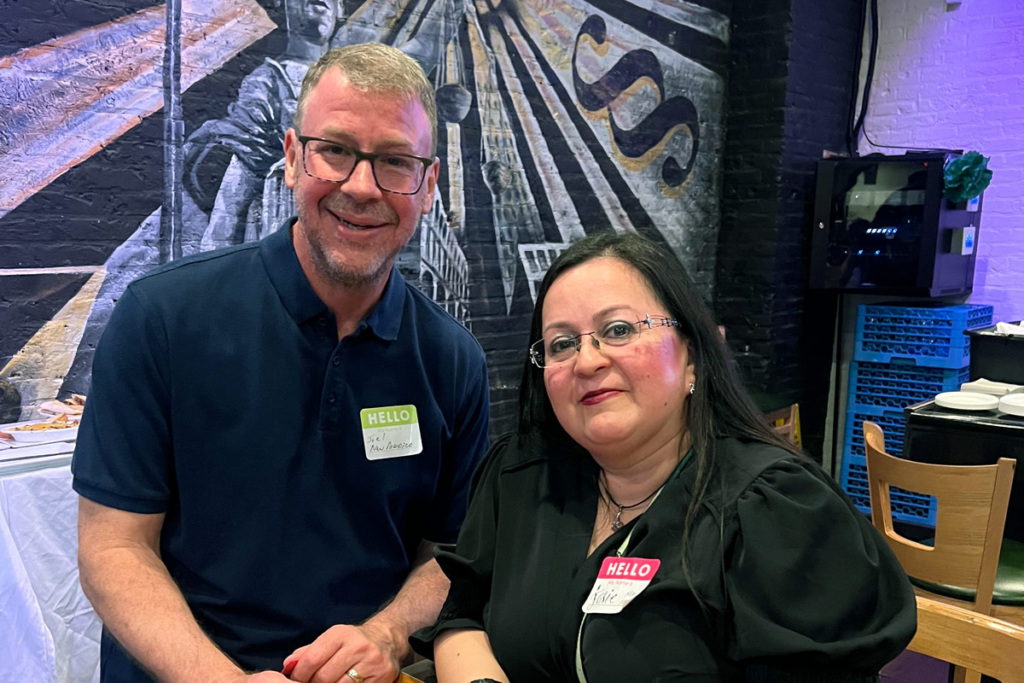
Joel Hutchinson and Josefina Miller at a News Literacy District Fellowship retreat.
For years, educators have had a front-row seat to the often-troubling impacts of the information technology revolution on their teaching and on young people. To help ensure their students can thrive in a world where misinformation pollutes a relentless stream of online content, a team of educators in Las Cruces, New Mexico, turned to the News Literacy Project.
“Media technology is shifting far faster than we can keep up with it. Most students are getting news from TikTok and other ‘news’ sources. This was driving our thinking,” said Joel Hutchinson, secondary English language arts content specialist for Las Cruces public schools, a district with 25,000 students.
In 2021, Hutchinson, secondary Social Studies Content Specialist Jamie Patterson, and middle school English language arts Content Lead Josefina Miller applied to NLP’s News Literacy District Fellowship program. They were accepted into the inaugural cohort in 2022.
During the two-year fellowship, districts partner with NLP to develop and implement innovative, sustainable initiatives to embed news and media literacy education in their schools. Shaelynn Farnsworth, director of the program, credits the Las Cruces team with involving cross-curricular leaders and support staff to tackle the challenge. “Right from day one they met regularly and built a plan. They are of one of our strongest fellowship districts and are a model for the state.”
The educators consider news literacy instruction an educational imperative and believe a lack of news literacy skills disempowers students. “It’s a necessity. We need to start as early as possible because we know that our students have access to all forms of technology at very early ages,” Miller said.
It starts with the teachers
Patterson noted how her son, age 5, likes to watch videos of tornadoes on YouTube and can’t tell what is fake and what isn’t. “It was a big ‘Aha!’ moment for me. He hasn’t even started school yet, and he’s already seeing these videos and everything else, and they’re forming what he understands about the world. And that’s a problem.”
But before they could roll out news literacy instruction, the team needed to provide teachers with the support to integrate it in their classrooms. They piloted professional development with a group of high school ELA and social studies educators, building much of the curriculum around NLP’s signature digital learning platform, Checkology®.
“We have teacher leaders who experimented and tried things out, and they’re now the ones that are helping us grow the program over the next few years,” Patterson said.
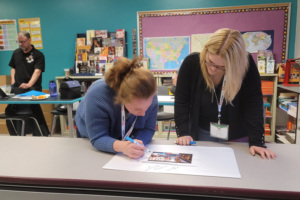 Las Cruces educators Megan Belch and Chelsea Lester participate in a critical observation exercise to vet the legitimacy of an image and its use at a professional learning event.
Las Cruces educators Megan Belch and Chelsea Lester participate in a critical observation exercise to vet the legitimacy of an image and its use at a professional learning event.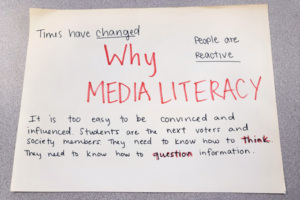 A poster created by a Las Cruces educator at a professional learning event.
A poster created by a Las Cruces educator at a professional learning event.The fellowship gave the educators the time and resources to focus and plan each step of the process, Hutchinson said.
“Because we had a preview with the pilot and the feedback from our colleagues, we can trickle down the skills from secondary level into middle school,” eventually incorporating news literacy instruction into elementary school, Miller noted.
News literacy instruction has been implemented in all Principals of Democracy classes, a course for upper grade levels, and it’s been written into the social studies curriculum guide for seniors. Students are introduced to news literacy at the start of the school year, and it is woven into class instruction throughout the year, so concepts are constantly reinforced.
Looking beyond their borders
What also sets the Las Cruces fellows apart is their vision of establishing news literacy education as a priority for all students in New Mexico, Farnsworth said. “They are working at the regional and state levels to help inform legislative decisions.”
And the educators hope to continue to advocate for news literacy at home while also assisting other districts as participants in NLP’s News Literacy District Fellowship Alumni program.
To have a meaningful impact, this work can’t start soon enough, the educators say. “What success would look like is to see this as a common practice, just part of the conversation. If we want to prepare kids for tomorrow, you’ve got to be thinking about tomorrow,” Patterson said.
Fellowship Highlights
- The Las Cruces fellowship team built on government momentum after New Mexico directed the Department of Education to develop and implement plans to include professional development for teaching digital citizenship, of which news literacy is a component. Among the efforts:
- Hosting and presenting at statewide ed tech and social studies conferences.
- Working with civic groups, such as The League of Women Voters, to advocate that news literacy is essential for a robust democracy.
- Las Cruces educators created fellowship digital portfolios documenting their implementation of news literacy instruction into their teaching, including:
- News literacy professional learning.
- Classroom and student achievement.
- Plans for continued implementation.
Statement on the attempted assassination of former President Trump and the mis- and disinformation in its aftermath:
At the News Literacy Project, we join others in America deeply troubled by the attempt on former President Donald Trump’s life on July 13. While thankful that he was not seriously injured, we extend our condolences to the family of Corey Comperatore, a firefighter, father and husband who lost his life. We also send our wishes for a swift and full recovery to the two other men who were injured in the shooting. Political violence should hold no place in our democratic process and civic discourse.
Immediately after the shooting, rumors and unverified claims emanated from across the political spectrum and spread rapidly online. In breaking news situations, the facts constantly evolve during the hours that follow, and even in the days and weeks after. We should avoid the temptation to propagate opinions that could further fuel false and unverified claims, expand the reach of propaganda and hate speech, and potentially lead to further violence. We all are susceptible to confirmation bias because many of us live in media echo chambers that reinforce our beliefs and leave us blind to new facts that can put an event in context and improve our understanding of it.
For helpful resources on how to evaluate breaking news, avoid confirmation bias and understand conspiratorial thinking, follow our social media channels and visit our website, where we provide additional resources to help promote informed news consumption and empower you to combat the spread of harmful falsehoods.
Celebrate Juneteenth with facts, not falsehoods
Today NLP recognizes and celebrates Juneteenth, which became an official U.S. holiday in 2021. The designation commemorates the events of June 19, 1865, when federal troops freed the last of our nation’s enslaved people, who were being held by the Confederacy in Galveston, Texas.
More than two and a half years earlier, on Jan. 1, 1863, President Abraham Lincoln signed the Emancipation Proclamation, freeing all of those enslaved in the U.S. But news of freedom alone did not equal liberation. For those enslaved in Galveston, it finally arrived when Union troops defeated the Confederacy there in June 1865, more than two months after Confederate General Robert E. Lee surrendered to the Union Army, ending the Civil War.
Also known as Freedom Day or Emancipation Day, Juneteenth is the oldest known celebration marking the end of slaveryin the U.S. The National Museum of African American History & Culture declares it “our country’s second independence day” and notes that its enduring legacy indicates “the value of never giving up hope in uncertain times.”
Myths and misinformation
As with any important day in U.S. history, misinformation about Juneteenth abounds. One common misperception is that enslaved people were unaware that the Emancipation Proclamation had freed them in 1863. Alexa Volland, NLP’s senior manager of multimedia content, clears things up in this short video. To steer clear of misinformation about Juneteenth, seek out standards-based sources and don’t assume everything you see about the holiday — especially posts on social media that trigger strong emotional reactions— is credible.
We encourage you to join the News Literacy Project in celebrating Juneteenth and learning more about its history and meaning. This Smithsonian piece is a good place to start, and this New York Times interactive article from 2020 puts Juneteenth in perspective. For those marking the holiday for the first time, the Associated Press published this guidanceyesterday.
For more on the Juneteenth holiday, check out our Flipboard collection of articles and resources.
Vetting election information: Tips for veterans, service members
Mis- and disinformation spread in politically charged times, particularly during election campaign season. Military service members, veterans and their families are often targeted by purveyors of disinformation seeking to undermine trust in the voting process.
To break through a confusing and misleading information landscape, the News Literacy Project hosted a panel of experts who work with the military community to discuss common types of election-related misinformation and practical tips for finding reliable news before voting. Zack Baddorf, Navy veteran, journalist and co-founder of Military Veterans in Journalism, moderated the conversation.
📣 Learn the messaging
Ahead of elections, foreign adversaries and domestic actors might aim to influence voters by emphasizing political friction and distrust in the voting process, said Richard Brookshire, CEO and co-founder of the Black Veterans Project. Propagandists seek to influence votes by exacerbating apathy or polarization. “They look at…points of conflict as cracks in the foundation,” added Joe Plenzler, a Marine Corps veteran and board member for We the Veterans and Military Families. “And they just need to pour their narrative like water into these cracks and wait for it to freeze and expand and burst.” Specifically, this might look like messages of moral or economic decline, competition and resource scarcity, Plenzler said.
“What we’re seeing is election integrity messaging and leaning into that in a way to chip away at voter confidence and to make you question whether or not it’s even worth coming out to vote.”
— Richard Brookshire
🧠 Engage with your emotions
Manipulative messages often spark a strong emotional reaction like fear or anger. To avoid being influenced by misinformation, Plenzler suggested the practice of identifying your emotions. When you feel fear, say what you’re feeling to re-engage your brain, Plenzler said. Dissect the message by asking, “To whose advantage is my fear?” he said. Where is the information coming from, and what is the information source trying to get you to do? Don’t underestimate the power of pausing to take a few deep breaths.
“The main takeaway and how you subvert that is through emotional intelligence because the opposite of fear in this situation is not courage… It’s skepticism. It’s asking very hard, pointed questions and being curious about the world.”
— Joe Plenzler
🗳️ Military votes count
Absentee ballots, when filled out correctly, are always counted in every election, regardless of how close the race is. They hold the same weight as a vote cast at a polling place, said Scott Wiedmann, director of the Federal Voting Assistance Program. If you are submitting an absentee ballot, don’t forget to sign your ballot package and send it back as early as possible. If you have questions about registering to vote absentee or finding accurate voting information, Wiedmann points to your unit’s voting assistance officer.
“Every absentee ballot that’s sent in to the election official,
that’s filled out properly and is received on time,
is counted in the election.”
— Scott Wiedmann
📰 Vet your news
If misinformation exists, when can you trust what you read? Nikki Wentling, who covers disinformation and extremism for Military Times, recommends looking for transparency behind the news organization. You should be able to find information about its ownership and funding and look for ethical guidelines published on its site. Credible news outlets also take responsibility for errors, so an outlet that publishes explanations of mistakes and corrections is a good sign, Wentling said.
“Do a quick search of who owns the publication you’re reading or the news channel you’re watching, because reputable news outlets will be transparent about who owns and funds them.”
— Nikki Wentling
For more ways to find credible election news, check out our elections resource hub.
Neveah Rice: 2024 Gwen Ifill Student of the Year
Neveah Rice
Cornell High School
Coraopolis, Pennsylvania
 Neveah Rice felt a bit dazed when she learned that she was the News Literacy Project’s 2024 Gwen Ifill Student of the Year. “It felt like a dream. I didn’t think I actually won,” the senior at Cornell High School in Coraopolis, Pennsylvania, told NLP.
Neveah Rice felt a bit dazed when she learned that she was the News Literacy Project’s 2024 Gwen Ifill Student of the Year. “It felt like a dream. I didn’t think I actually won,” the senior at Cornell High School in Coraopolis, Pennsylvania, told NLP.
Rice, who plans to study journalism at Indiana University of Pennsylvania in the fall, was nominated for the award by her U.S. Government teacher Amy Palo. While Palo was delighted to learn that NLP selected Rice for the honor, she was not surprised. “Neveah is truly a joy to have as a student and makes me hopeful for the next generation of journalists.”
In her nomination letter, Palo wrote that Rice “is committed to the First Amendment’s protection of the press. She is committed to learning about journalistic standards.” In addition to her coursework, Rice is involved in several school and community engagement activities, which she described in a recent article by a local news organization, Public Source.
Palo used NLP’s digital learning platform, Checkology®, and additional resources to teach students about the First Amendment and other foundational components of news literacy, which Rice embraced. “I have learned so much from my experience with news literacy education through Checkology,” she wrote in her nomination submission.
Checkology also has helped Rice become an apt discerner of credible information. “It did change the way I consider information that I come across online. Now that I know there’s certain misinformation and bias and stuff to look out for, I have a keener eye for those things,” she told NLP in a recorded interview.
A personal responsibility
Studying news literacy made her aware that we all play a role in pushing back against misinformation and helping others find credible sources and fact-based information, particularly on social media. “I do think that there is a responsibility that everybody should have when considering what they’re posting on social media, because misinformation is a serious problem in our society. And I think you should try your best to fact-check what you’re posting and make sure you read and hold yourself accountable.”
She acknowledged that this can be challenging, given the torrent of information that floods our newsfeeds and online communities every day. “I think it’s very overwhelming” for everyone, but especially for teens, she said.
And this is where her newfound skills make all the difference. “Being news-literate can contribute to how you’re thinking in real-life situations. I have learned so much from my experience with news literacy education through Checkology. I have applied this knowledge and will continue to make use of what I have learned whether it be in school or just in my daily life,” she said.
Rice readily grasps what this knowledge means for democracy and the importance of being civically engaged. “I will be voting in this election. It’s going to be my first time voting. I’m kind of nervous for it. I think my vote does matter.”
About the award
Gwen Ifill was a trailblazing journalist — and longtime NLP supporter and board member — who died in 2016. The award in her honor is presented to female students of color who represent the values she brought to journalism. Ifill was the first Black woman to host a national political talk show on television as moderator of Washington Week and was a member (with Judy Woodruff) of the first female co-anchor team of a network news broadcast on PBS NewsHour.
Lindsay Downs: 2024 Alan C. Miller Educator of the Year
Lindsay Downs
Sewickley Academy
Sewickley, Pennsylvania
 It’s certainly factual to say that Lindsay Downs is a librarian at the Sewickley Academy in suburban Pittsburgh. But that statement fails to capture all that she does and the values that drive her.
It’s certainly factual to say that Lindsay Downs is a librarian at the Sewickley Academy in suburban Pittsburgh. But that statement fails to capture all that she does and the values that drive her.
Downs has long been a committed educator, a champion of cross-discipline learning and an advocate for helping students become more savvy news consumers. And now, she is the News Literacy Project’s 2024 Alan. C. Miller Educator of the Year. “I am so excited to be receiving the Alan C Miller Educator of the Year award,” she told NLP in a video interview. “ I have been teaching for 15 years” and helping students discern fact from fiction “is a labor of love.”
Since first learning about NLP at an American Association of School Librarians conference in 2021, she has used the digital learning platform Checkology®, the newsletter The Sift®, infographics and other downloadable material in her curriculum.
She believes news literacy gives students agency inside and outside of the classroom. “It’s really amazing to empower others to be the managers of their own learning. You’re teaching people how to be independent learners, and that’s a very powerful thing.”
Learning Specialist Dorothy Killmeyer, Downs’ colleague, nominated her for the award. Killmeyer described how Downs is a vocal advocate for helping students become more news-literate, driving the development of classes in research and information literacy for the middle school grades and inspiring fellow educators. “Lindsay collaborates with teachers from grades 6-12 in multiple subject areas. She works diligently with them to ensure that they can locate, evaluate, and create information ethically and accurately.”
Preparing tomorrow’s voters
Downs believes it’s important to support educators in other disciplines as they work to incorporate news literacy concepts into their lessons. For example, she recently collaborated with a science teacher whose students were doing research projects related to climate change. “I was brought in not only for the resources and the research process, but also to talk about how others talk about science, because whenever they were researching scientific topics related to climate change, they were inevitably coming across misinformation or manipulated content.”
And she knows that the ability to identify credible information benefits students inside and outside the classroom. With some of them eligible to vote for the first time this year, the stakes are high. “I think that my responsibility as an educator to prepare voters is to really help them critically think about information. It’s not so much what to think, but how to think.”
Ultimately, she’d like to see news and media literacy education become a national priority. “I think that as a society we really need to think about what media literacy education looks like. I would love to see that implemented in every state,” she said. “I’m concerned that if we don’t implement media literacy education on a large scale, we’re going to continue to see this crumble in civil discourse and how we interact together as a society.”
Committed educators like Downs are working hard to keep that from happening.
About the award
Alan C. Miller founded the News Literacy Project in 2008 to give middle and high school educators the tools to teach students how to separate fact from fiction. As a reporter with the Los Angeles Times for 21 years, he won more than 20 national honors, including a Pulitzer Prize for National Reporting. In 2020, Washingtonian magazine named him a Washingtonian of the Year, and in 2021, he received an AARP Purpose Prize. As Miller prepared to step down as NLP’s CEO in 2022, the board of directors designated the Educator of the Year Award in his name to recognize his contributions to the field.
Tamoa Calzadilla: 2024 John S. Carroll Journalist of the Year
Tamoa Calzadilla
Factchequeado
Miami
 Tamoa Calzadilla understands better than most people how vital a free press is to a functioning democracy. As editor in chief of Factchequeado, an initiative created to counter mis- and disinformation within Spanish-speaking communities in the United States, she has practiced journalism in conditions where press freedoms were protected as well as under a dictatorship.
Tamoa Calzadilla understands better than most people how vital a free press is to a functioning democracy. As editor in chief of Factchequeado, an initiative created to counter mis- and disinformation within Spanish-speaking communities in the United States, she has practiced journalism in conditions where press freedoms were protected as well as under a dictatorship.
To recognize her fearless investigative reporting in her native Venezuela and her leadership in fact-checking for Spanish speakers in the U.S., the News Literacy Project named Calzadilla its 2024 John S. Carroll Journalist of the Year.
Alan C. Miller, founder and former CEO of NLP, called Calzadilla to tell her that she had been selected for the honor. “Initially, she was stunned and speechless. It took her several minutes to be able to express in words how much this means to her.”
“It’s a great honor,” she told Miller. “I’m an immigrant woman who had to leave her country. You never expect that you will receive an award like this. It has been a hard path as a professional, and personally. I am so grateful.”
Calzadilla has been a dedicated partner with NLP since 2022. She assisted in two election campaigns by recording Spanish-language content, providing translations of NLP resources and actively promoting National News Literacy Week. Earlier this year she participated in NLP’s first-ever Spanish-language event on election misinformation.
“I think news literacy should be required for high school curriculums,” she told NLP in a recorded interview.
Forced to flee Venezuela
An internationally recognized award-winning journalist, Calzadilla’s honors include the Maria Moors Cabot Special Citation from Columbia University and the Press and Society Institute and Transparency International in Latin America and the Caribbean prize for coverage of corruption in Latin America and the Caribbean. She was a Reynolds Journalism Institute fellow at the University of Missouri (2023-2024) and is a John S. Knight journalism fellow at Stanford University (2024-2025).
Raised in Caracas, Venezuela, Calzadilla discovered a love for journalism in college. “I think the journalism chose me,” the former engineering major said. Her investigative reporting exposed corruption and human rights violations, ”to give voice to people who don’t have a voice.”
“I went to the poor communities in my country. I covered a lot of stories in jails. But I loved that. When you understand the personal stories and the complex stories about the system and what is wrong, this kind of journalism was my passion for many years.”
Her coverage of government corruption and repression forced her to flee Venezuela with her family in 20I5 following the deepening of authoritarianism after the death of President Hugo Chávez in 2013. Calzadilla’s husband, a photojournalist, was briefly jailed on groundless claims of espionage, and someone broke into their apartment and stole her computer. “It was the moment we figured out we were in danger. We have two children. We have to go.”
They immigrated to the U.S., settling in Doral, Florida, near Miami, where Calzadilla worked as an investigative journalist with the Spanish language TV news outlet Univision. She covered major stories, including the Panama Papers, a massive leak of financial and legal records that exposed a system of crime and corruption hidden by secretive offshore companies.
Disinformation in Spanish-speaking communities
With the rise of mis- and disinformation targeting Latino and Hispanic communities, she led elDetector of Univision Noticias, the first Spanish-language fact-checking platform in the U.S., and later joined Factchequeado. As its editor in chief, she leads a team that fact-checks digital content, educates their audience on journalism standards and election practices and “prebunks” trending misinformation topics and tactics before people encounter them.
While misinformation is a problem for everyone, Latino and Hispanic communities can be more vulnerable to bad actors, Calzadilla explained. “For Spanish speakers, there are fewer reputable news sources and just three fact-checking organizations.”
Her team already is contending with election-related disinformation similar to what occurred during the 2020 election season. “We have to be prepared because we’ve started to see the same kind of disinformation that we’ve seen before or during electoral processes.”
The work she does to combat misinformation with partner organizations, and especially NLP, is deeply important to her. “I love the idea of collaborating to do something powerful. It’s very important to reach young people and give the students the tools and knowledge. We will be much better in general and in our community. Bilingual students are key in this process.”
About the award
Named for one of the most revered newspaper editors of his generation, the John S. Carroll Journalist of the Year Award is given annually to journalists who have contributed significantly to NLP and its mission. The honorees are selected by a committee of NLP board members and staff. During an acclaimed journalism career spanning four decades, Carroll was the editor of three major U.S. newspapers — the Lexington (Kentucky) Herald-Leader, The Baltimore Sun and the Los Angeles Times. He was a founding member of NLP’s board and served as its chair for four years until shortly before his death in 2015.
Livestream: Vetting election information
Vetting election information: How service members, veterans and military families can get credible voting information
About the webinar
As the 2024 election season is underway, falsehoods about voting and ballot issues already are circulating widely. Bad actors exploit a charged political atmosphere by spreading false claims about candidates, disinformation about how to vote and baseless rumors that undermine trust in election systems and infrastructure.
Military service members, veterans and their families in particular encounter conspiracy theories and other types of mis-and disinformation frequently. In a recent poll of Military Times readers, 57% said they personally have been targeted.
To break through this confusing and often misleading information landscape, the News Literacy Project is hosting a panel of experts who work with the military community for a virtual discussion about common types of election-related misinformation and practical tips and tools for finding reliable news sources before voting.
Panelists include: Richard Brookshire, CEO and co-founder of the Black Veterans Project and Army veteran; Joe Plenzler, communications advisor for We the Veterans and Military Families, volunteer poll worker for Vet the Vote and Marine Corps veteran; Nikki Wentling, Military Times reporter and Military Veterans in Journalism fellow; and Scott Wiedmann, director of the Federal Voting Assistance Program. Zack Baddorf, co-founder of Military Veterans in Journalism and Navy veteran, moderates.
Why press freedom matters: The case of Evan Gershkovich
Ellie Blanchard
On March 29, 2023, Wall Street Journal reporter Evan Gershkovich was working on an assignment in Russia when he was accused of espionage and arrested. More than a year later, Gershkovich is still wrongfully detained, despite his and the U.S. government’s denial of Russia’s allegations.
This high-profile case highlights the necessity of a free press. Without the standards-based reporting press freedoms enable, we risk the spread of misinformation, disinformation and declining trust in institutions. Paul Beckett, an assistant editor at the Journal who is also responsible for their efforts to secure Gershkovich’s release, recently joined the News Literacy Project to discuss the case. Here are some key takeaways from our conversation with him:
The effect on reporting in Russia
Concerned for their safety, most reporters from the United States left Russia after Gershkovich was detained. “Russia is now being covered by most of the major U.S. news organizations from Berlin, from Warsaw, from Dubai, from London,” Beckett said. Independent Russian journalists also fled the country, contributing further to a lack of trustworthy news coming from inside the country.
“We know there is no substitute for being on the ground and writing about what you are seeing.”
Recognizing reliable journalism
When journalists are not allowed to do their duty as truth-tellers, it becomes even more important for individuals to be able to recognize signs of credible reports. As a starting point, Beckett suggests looking for multiple sides to a story. Consider whether the information you see includes various angles that represent multiple stakeholders.
“You want to think you’ve heard from everybody. And if you haven’t heard from everybody, you have to ask yourself, ‘Why not?’”
How to support Gershkovich
As Beckett’s team and the U.S. government continue to work toward Gershkovich’s release, you can support their efforts. Beckett encourages sharing Gershkovich’s name widely. “If people talk about him, think about him, mention his name, talk about him over dinner, I just think all of it makes a difference,” he said. You can also show your support more directly by visiting wsj.com/evan for updates and resources, including how to send Gershkovich a letter of support in Moscow.
“That he’s not forgotten is very important in a practical sense for our ongoing efforts.”
🌱 For the classroom
Educators: To seamlessly incorporate discussions of Evan Gershkovich and press freedoms into your classroom, start with our free “Misinfo 101” course on the Checkology® virtual classroom. This preset sequence of lessons will help students identify and debunk misinformation. Checkology also includes a “Press Freedoms Around the World” lesson, which explores the state of press freedoms in 22 nations.
Three practical ways to detect and debunk misinformation

To stay in the loop with Dan’s fact-checks of viral claims, join the RumorGuard for timely alerts.
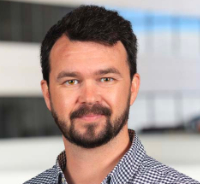
“If you want to be informed, if you don’t want to be fooled by this sort of stuff, you have to be an active consumer. You can’t just take these rumors as they are.”
🐌 Slow down
Information travels quickly on the internet. If a post prompts an emotional reaction, practice patience and seek out additional sources as you look for answers. Dan suggests asking yourself, “If that image or claim is true, what else would need to be true?” For example, a fake image that appeared to show the Eiffel Tower on fire went viral earlier this year. If the Eiffel Tower were truly on fire, you would also be able to find breaking news coverage, photos and videos taken from multiple angles, statements from local officials and police reports. But none of that was true when that false image circulated in January.
“The problem is that there’s so much information that comes at us that we rely on our instincts too much, and we have to slow down to critically examine content.”
🖼️ Remove the frame
Misinformation is often designed to exploit our biases, and content on social media is often paired with a caption to prime the way we view it. Try this exercise: If you ignore the photo or video’s caption, what do you see? Try to view the content for what it is, rather than in the context set up by another user.
“When we remove the frame and just view the content as itself, we can make our own conclusions before we can be influenced by these people who are spreading falsehoods.”
🥸 Check the source
Not all internet sources are created equal. If you come across an unusual or bold claim on social media, look into the account that posted the information. Does the source post legitimate news coverage, or does it focus on satire and jokes?
“Checking the source is probably the quickest and easiest thing that we can do when scrolling on social media. Just clicking on a person’s account can give us a good idea of the type of content that they share.”
Finding water in a news desert: Tips from three experts
Ellie Blanchard
Americans in 203 counties don’t have a local news outlet, recent research shows. During election season, a lack of local news presents a challenge to voters looking for vital information about ballot initiatives and candidates running for office.
As information becomes harder to find, especially in rural areas, the News Literacy Project convened three experts to share tips for finding reliable news before heading to the polls. For more ways to find credible election news, check out our elections resource hub.
💦 Sweat the details
To avoid being fooled by bad actors masquerading as local officials, learn to recognize legitimate election information that you find in your mailbox or online. Brianna Lennon, county clerk for Boone County, Missouri, advised looking for clues that a source is legitimate, like an official election mail insignia or a web address that ends in .gov.
 “In terms of finding out what’s on the ballot, the actual government website and the mail are the two biggest ways that people are going to find it.”
“In terms of finding out what’s on the ballot, the actual government website and the mail are the two biggest ways that people are going to find it.”
— Brianna Lennon
💡 Take responsibility
If your area lacks news coverage on local issues, turn to trusted community leaders to better understand candidate positions, suggested Benjy Hamm, director of the University of Kentucky’s Institute for Rural Journalism and Community Issues. “I call friends who deal with the court system… I talk to teachers about school board members,” he said. While this is a good starting point for getting information, be aware of biases and be sure to consult multiple sources.
 “There is a responsibility to vote, but there’s a greater responsibility to be an informed voter.”
“There is a responsibility to vote, but there’s a greater responsibility to be an informed voter.”
—Benjy Hamm
🤔 Think like a journalist
Without a formal voter guide from a local news outlet, you can operate like a journalist yourself to find important information. Alana Rocha, editor of the Rural News Network, encourages all voters to think critically when they see promotional flyers or texts. Seek news from a variety of sources and confirm claims by visiting candidates’ platforms directly.
 “Diversify your sources. Go to the person’s website to see what they have to say.”
“Diversify your sources. Go to the person’s website to see what they have to say.”
— Alana Rocha
Checkology wins prestigious Webby Award
NLP’s digital learning platform Checkology® has won a prestigious Webby People’s Voice Award, the International Academy of Digital Arts and Sciences announced today.
The Academy’s 28th annual awards honor the “best of the internet,” recognizing artists, media companies and other creatives at the leading edge of tech and culture. Checkology won in the category of Websites and Mobile Sites — Responsible Information, which recognizes products, platforms, software and other technologies working to combat disinformation, misinformation and false or misleading information online.
Checkology was selected as an honoree from among 13,000 entries across the world. The Academy noted that just 4% of those entries won a Webby Award. The People’s Voice Award is decided by a popular online vote. The academy said more than 550,000 people cast 2.2 million votes this year.
“The future of our shared civic life depends on young people learning the skills necessary to find credible information online,” said News Literacy Project President and CEO Charles Salter. “Checkology is the most comprehensive resource on the internet to do just that. We are honored by this recognition and remain committed to our mission of building a future founded on facts.”
Checkology teaches vital news literacy skills
Checkology, a free digital learning platform, teaches people how to identify credible sources and discern fact-based information in a sea of falsehoods, manipulated content and viral rumors. The platform features 19 foundational news literacy lessons on topics including misinformation, conspiratorial thinking and news media bias. Respected journalists and leading experts guide the interactive lessons, which include real-life examples drawn from the internet, including social media platforms such as TikTok.
Primarily intended for middle and high school, more than 100,000 students used the platform last school year. Independent evaluations show students who completed Checkology lessons learned vital skills, including how to identify when social media posts fail to provide credible evidence. Launched in 2016, Checkology is just one of the many free resources offered by the News Literacy Project and used by educators in all 50 states.
Winners will be honored at a gala hosted by comedian Amber Ruffin on Monday, May 13, in New York City.
School’s entire freshmen class learning news literacy with NLP’s resources
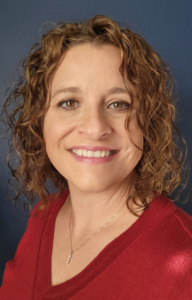
Photo courtesy of Pam Szabo
If educator Pam Szabo were a student today, she’d probably be the kid asking the teacher for extra homework.
“I like to be busy. That’s who I am,” said Szabo, a veteran English teacher and reading specialist who joined La Salle College High School in Wyndmoor, Pennsylvania, a Philadelphia suburb, as a part-time library assistant in fall 2022, when her son enrolled as a freshman.
La Salle, a Catholic all-boys college-prep school, transformed its traditional library into the McShain Center for Digital Research and Collaboration, and Szabo envisioned all the ways she could make an impact. “With my ambitious personality, I began to ask for more and more responsibilities. I was bugging my dean, ‘What else can I do, what else can I do?’”
So, the dean asked her to create a media and news literacy curriculum as a component of the school’s required freshman course, Introduction to Technology and Design.
“I have a great interest in curriculum design and development, so I started to dig for resources to teach this,” she said.
Szabo came across the News Literacy Project’s Framework for Teaching News Literacy and then discovered Checkology®, NLP’s e-learning platform. She likes that subject matter experts guide students through the lessons and that the topical subjects and examples from social media make the material relevant.
An investigative news literacy curriculum
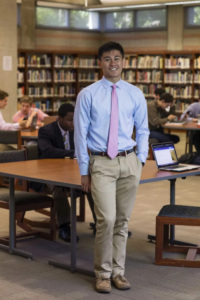
Photo courtesy of La Salle College High School
To develop the curriculum, she watched all 19 Checkology lessons and found that this exercise also benefited her as a media and news consumer. “It made me stop and think of what I see in media. It made me more aware,” said Szabo, who is now the school’s media literacy instructor. Using NLP resources, she teaches more than 300 freshmen each year.
She focuses her sessions around nine Checkology lessons, including “Arguments and Evidence,” “Evaluating Sources Online” and “Introduction to Algorithms.” She frequently uses challenges offered within the platform’s Check Center, where students put their investigative skills to the test.
Szabo works through the lessons and exercises with her students, stopping frequently for discussion and closer examination. For example, she might present an image from the Israel-Hamas war and stop to ask questions that test the students’ critical observation skills: “What do you think you’re looking at? Who is saying what? Do they have the authority to say it? Is there money involved?”
Students enjoy the investigative nature of the class and are often surprised that an authentic-looking social media post is doctored, fabricated or taken out of context by a source that lacks credibility, she said.
Concepts apply to many disciplines
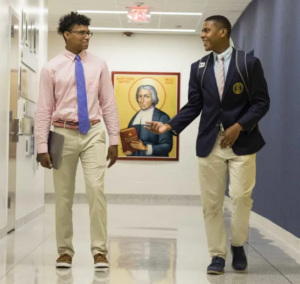
Photo courtesy of La Salle College High School
At her dean’s request, Szabo is preparing to give a presentation to colleagues explaining what it means to be news-literate and demonstrating how other teachers can incorporate news literacy skills into their lessons. She also will promote the value of having a journalist as a guest speaker in class because it provides real-life authenticity and could relate to a variety of disciplines, she said.
Szabo already has witnessed how students apply their new skills in other settings. “I was helping with a research project in social studies classes, and I heard them using terminology from Checkology about finding credible resources and using some of the skills they learned — especially lateral reading.”
She noted that educators don’t need to dedicate a full class period to teach this important material. “It’s very doable even if you don’t have a lot of time. You can do it as a bellringer. And it’s valuable for assignment modules when you have a substitute teacher.”
Vote for us! Checkology is nominated for a Webby Award
Move over “Oppenheimer,” the News Literacy Project’s Checkology® digital learning platform is in the running for top honors in The Webby Awards, the Academy of Digital Arts and Sciences’ signature awards program.
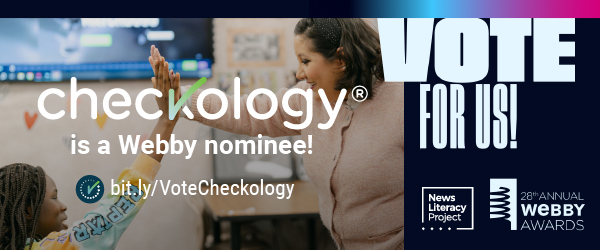
Checkology, our field-defining news literacy product, is one of five finalists in the websites and mobile sites category Responsible Information. Just being nominated is a big win. Our entry was one of 13,000 projects from around the world vying for honors in this category.
Even better, NLP has two chances to come out on top: The Webby Award, which is chosen by the Academy itself, and The Webby People’s Voice Award, which the public chooses. “Both awards are a mark of international distinction for Internet excellence,” the academy’s president Claire Graves wrote in when notifying us that Checkology was a finalist.
Here’s where you come in. The public voting period has begun and is open until Thursday, April 18, at 11:59 PDT. Please visit the Webby site to cast your vote for Checkology today. It’s quick and easy.
The academy will announce the winners on Tuesday, April 23, and will celebrate the honorees at the 28th Annual Webby Awards gala hosted by Amber Ruffin on Monday, May 13 in New York City.
Thank you for supporting NLP and a future founded on facts.
Don’t be blinded by solar eclipse misinformation
On April 8, millions of people across North America will don special glasses, crane their necks and gaze skyward to view a rare natural phenomenon — a total solar eclipse.
An eclipse occurs when the shadow of the moon passes between the Earth and the sun, blotting out the sunlight for several minutes and darkening the sky. The upcoming eclipse will begin on the Pacific coast of Mexico a little after 2 p.m. ET and carve a diagonal path in the sky northeast across the U.S. before slipping off the continent in Newfoundland, Canada, shortly before 4 p.m. ET. The United States won’t see another total eclipse for 20 years.
Given the rarity of the event, it’s no surprise that the eclipse is generating conspiracy theories and misinformation, which have been spreading across social media and sparking fear, confusion and anxiety. Natural phenomena are often the subject of misinformation, and conspiracy theorists mine them for hidden meanings, secret government machinations and apocalyptic omens. The TikTok video we debunked on our RumorGuard® platform and the biblical-related falsehood we unmasked on Instagram are good examples of the scare-mongering circulating about this eclipse.
When family and friends share misinformation
Purveyors of mis- and disinformation who have a stake in its spread know that this is exactly the kind of content that well-intentioned friends and family might share widely. Just ask Tony Russomanno of California, who emailed us recently to share how he responded to eclipse-related misinformation that a relative shared and her friend amplified:
“i heard on the day of the Eclipse CELL PHONES may not work well or at all. be mindful and prepared. (April 8th)”
“They say plan on having cash on hand, plenty of food & water …”
Russomanno realized the women were being misled, so he researched credible information and replied to them in a thoughtful post that read, in part:
“What both of you said is technically TRUE, but perhaps not for the reasons you may think.
“The eclipse will NOT affect cell service in any direct way. However, a story in The Herald-Times in Bloomington, Indiana, a town that will be in the path of totality, said that so many people will be visiting the area and streaming live video to their friends elsewhere that the local cell towers may not have the capacity to handle the increased usage.”
The misinformation about hoarding cash and food is similar to the hysteria before the turn of the millennium, when there were fears that the Y2K computer bug would bring down civilization. Spoiler alert: It didn’t.
‘A spark of truth’
There are several reasons for the appeal and intractability of conspiracy theories, and Russomanno shared an important insight. “Reading the story made me aware that even conspiratorial nonsense may contain a spark of truth.”
He used this realization to craft a response that prompted the women to delete their posts. “That awareness shaped my reply. By leading with an acknowledgment that the rumors, as written, were ‘technically TRUE,’ the refutation that followed may have been received in a more amenable frame of mind.”
You can avoid being tricked by scare tactics and wild conspiracies about everything from solar eclipses to U.S. elections by sharpening your news literacy skills. You will then be equipped to use that knowledge to help people in your community avoid these traps and stay well-informed, as Russomanno did. To begin, check out NLP’s free resources like RumorGuard, subscribe to our newsletters and explore our website.
If you are lucky enough to be in the path of the eclipse, remember, there’s no need to stock up on cash, candles and canned goods, but be sure to use proper eye protection before you look away from your phone and up at the sky.
Ambassador Connections: Meet Sara E. Gonzales — Texas
Ambassador Connections is a series highlighting NewsLitNation® Ambassadors.
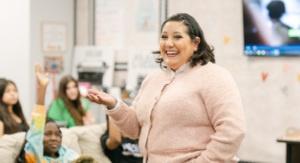
Yearbook and newspaper advisor Sara Gonzales’ leads her class of Journalism I and II students through a Checkology lesson at Paetow High School in Katy on Monday, Dec. 11, 2023. Photo credit: Laura Sponaugle for NLP.
1. As a NewsLitNation ambassador, you clearly are committed to news and media literacy education. What drives that commitment?
I remember the morning after Election Day in 2016 and hearing my students question why fake news and misinformation were such a large part of the election. They sought to have a deeper understanding of how to think critically, to fact check and help others with educated decisions in all facets of their lives. After that day, I made it a small mission of mine to help my students become critical thinkers and to normalize the standard of being news-literate. Every single day in my journalism classes we go over news from the previous 24-hour cycle and cross-verify stories from multiple outlets. If my students learn only one thing out of my journalism classes, I want them to learn how to truly understand the news and media today and how they impact their lives.
2. Please name a favorite tool or tip for teaching news literacy and how students responded to it.
Checkology® is a great tool to bring into the classroom. Recently, we did a Checkology lesson that allowed for the best classroom discussion as we went along. I love the aspect that it can be self-paced or taught as a full class (one-to-many) with the teacher leading instruction. The best part of the Checkology lessons is seeing that students question whether something is one way or another as they are going through the course. It is eye-opening and makes the learning fun.
As a class, we went through the “Citizen Watchdogs” lesson. A large number of my students had not heard of the Rodney King case, and it made them pause and look at the importance of that event and the unrest that followed in Los Angeles. Through the lesson, students were able to look at how one recorded event caused a national uproar. With this, my students were able to relate information to current news events and find ways to source their information even with people being everyday watchdogs.
3. These are particularly challenging times for being an educator. What has been your go-to de-stressor?
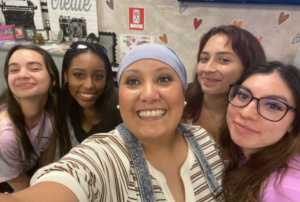
Isabella Semiglasov, Curtezha Woods, ambassador Sara Gonzales, Gabriella Leighton, Yvette Garcia, class of 2023.
I think everything is about balance and learning to know your boundaries. As a new teacher decades ago, there were nights I would be at school until almost 10 p.m., but now I have learned that the work will be there tomorrow. Sometimes that makes my to-do list really long, but I love Post-it® notes to-do lists. You can only put so much on a Post-it, and it is easily attainable. Also, I love to sit and read. Nothing can de-stress you more than getting lost in a book and letting go for a few hours as the pages flow by.
4. NLP’s PitchIt! student contest has recently opened in Texas. How do you think it will help educators with lessons related to news and media literacy in their classrooms?
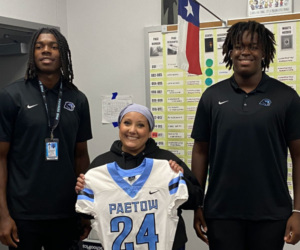
Jabari Bush (left) and Joseph Ugwu (right) Present Sara Gonzales a uniform after being named Teacher of the Week by the football team. Football players vote and select teachers who have made a difference in their high school careers both in their classroom and as support systems.
Several years ago, Texas passed legislation that requires K-12 news literacy for all school-age children. I think there has been concern of how to best teach news and media in the classroom that is objective and teaches our students to analyze resources. With the News Literacy Project, teachers have free resources with a click of a button. The information is unbiased and gives a holistic perspective of how to properly analyze the news.
This year, through NLP and the Ambassador Program, I have been able to get PitchIt! Texas off the ground and started. PitchIt! is a campaign perfect for teachers of any content to have their students write about news literacy, their thoughts and perspectives. We hope to get students to compete in Texas in such a pivotal election year where their voice matters.
5. Aside from fighting for facts, what else are you passionate about?
I am a fierce advocate of diversity in scholastic journalism. I firmly believe that journalism speakers and boards across the country need to be reflective of the voices of our students and mirror the diversity we see in our classrooms daily. In 2019, at the World Journalism Education Congress I was the only high school teacher attending to speak on diversity in scholastic journalism and how to increase the narrative to our reporting. While working with fellow journalists and journalism educators, we came up with five main points to focus on in our classrooms.
- Journalism educators and journalists must recognize the role news media haveplayed in marginalizing and sometimes traumatizing communities along the fault lines of race, class, gender, disability, generation and geography with missing voices, tokenism and negative stereotypes.
- A “call to action” to journalism educators and journalists to build diversity, inclusion and equity into all aspects of the curriculum, and a call to newsrooms to foster community accountability and power sharing based on diversity, inclusion and equity in all aspects of their operations.
- We need to recognize that diversity is an ongoing issue that is interconnected with economics, politics, entertainment and the environment.
- We must all recognize the impact the intersectionality of identities has on our journalism practices and teaching. This can be achieved through required and ongoing antibias (especially unconscious bias) education and multicultural competency training for educators, students and journalists.
- We must encourage and actively support students from marginalized groups to become journalists and recognize communicators from representative groups and local communities as professional communicators.
 6. Are you on team dog, team cat, team wombat?
6. Are you on team dog, team cat, team wombat?
Team dog all the way. I have three dogs: Maebel Lou, Dolly Estelle and Mason. Two are rescues. I can’t imagine my life without my dogs; they are the best and always provide a laugh at the end of a really stressful day. Feel free to ask me about my dogs. I have a story a day about them. There’s never a dull day at my house with them.
NLPeople: Susan Minichiello, senior manager of education design
Susan Minichiello
Northern California
1. What led you to the news literacy movement?
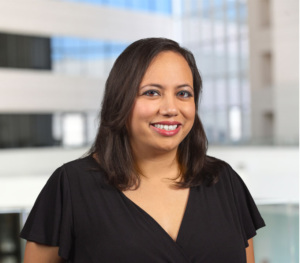 I could give a long list of reasons why the news literacy movement is essential, but for me, it all boils down to people. Everyone I care about is affected by misinformation one way or another, myself included. It’s a huge issue not just for our democracy but also for our collective health, the everyday decisions we make for ourselves and others and our interpersonal relationships.
I could give a long list of reasons why the news literacy movement is essential, but for me, it all boils down to people. Everyone I care about is affected by misinformation one way or another, myself included. It’s a huge issue not just for our democracy but also for our collective health, the everyday decisions we make for ourselves and others and our interpersonal relationships.
Watching the Jan. 6 insurrection at the U.S. Capitol and seeing vaccine misinformation spread during the pandemic were also motivating factors in joining the movement. Misinformation can be distressing, especially when loved ones share it. I like that news literacy is a sensible and practical solution to counter mis- and disinformation.
2. What news literacy tip, tool or guidance do you most often use?
Taking a pause! It sounds simple but it works. Instead of an instant like or share on a social media post, just taking a breather to fact-check or verify claims helps us to avoid contributing to the spread of misinformation.
3. Aside from fighting for facts, what else are you passionate about?
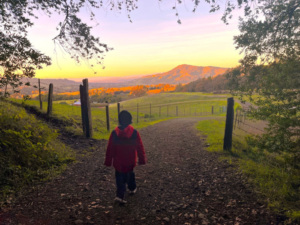
Minichiello’s son hiking a trail near their home in Sonoma County, California.
I’m a notebook addict. Does that count as a passion? I collect notebooks everywhere I go, and anytime I’m in San Francisco one of my first stops is usually the stationery store in Japantown.
I also love being outside as often as I can. Living in Sonoma County, California, we’re fortunate to have access to so many beautiful parks and wineries. It’s a wonderful place to hike and bike. If I need to decompress, working in my garden or taking a walk relaxes me.
4. Are you on team dog, team cat, team wombat?
I’m a former cat person fully converted to team dog! My family and I adopted a 20-pound rat terrier named Loki last year. She is the sweetest little lady! She came with the name Loki, and we didn’t want to change it because she is an adult dog, but we have so many nicknames for her: Loki Dokie, Gnocchi, Mochi, smokey Loki, etc. When I’m working from home, she’s usually curled up right next to me.
And no, I’ve never seen Loki, the Disney+ show, but I heard he’s quite mischievous. My Loki is pretty low key, but every once in a while, she unleashes a little chaos.
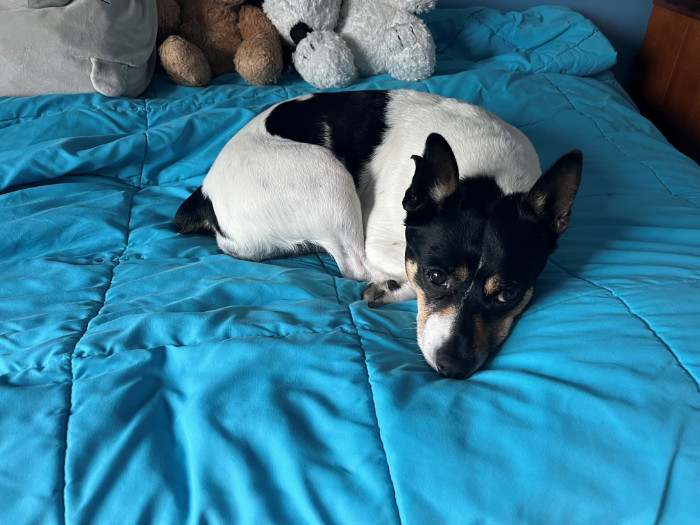
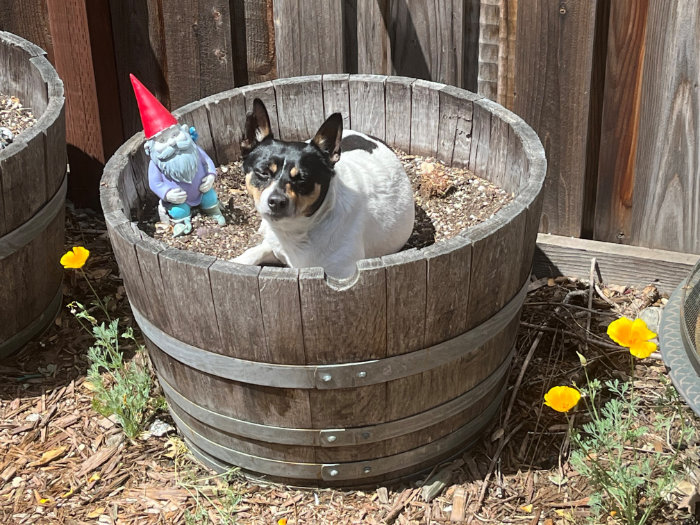

5. And finally, what item do you always have in your fridge?
Eggs from local farms. I love that bright orange yolk you can get only when the eggs are fresh. I cook eggs poached, sunny-side up, in a soft and fluffy French-style omelet with chives, or my favorite Thai omelet over steamed Jasmine rice. (Here’s a good Thai omelet recipe if you’re interested in cooking it, too.)
2023 The year in misinformation: News literacy takeaways
This past year, artificial intelligence generators became a proficient misinformation tool. With a little human input and a few clicks, anyone can quickly fabricate convincing (and misleading) fake images, audio or text. Still, bad actors don’t need elaborate technologies to mislead people. Tactics that are cheap and easy, like presenting an image or video out of context, are still more prevalent than their AI counterparts. Even worse, recent changes to X (formerly known as Twitter), such as altering the meaning of its blue check symbol or removing headlines from link preview panels, have made this content easier to spread and more difficult to spot. As the year ends, we review misinformation trends and the news literacy lessons they offer, so we can resolve to be better news consumers in 2024.
1. Truth remains in the AI of the beholder
AI generators are complex tools that make it simple to quickly fabricate synthetic digital images of, well, almost anything: the pope in a puffy coat, explosions at the White House, former President Donald Trump being arrested and crying babies in the rubble of destroyed buildings. Voice cloning AI tools also can create other deceptions: Videos of public figures saying things they never did. By altering the mouth movements and adding an AI audio replica voice to a genuine video, purveyors of disinformation falsely made it appear that former NBA player Shaquille O’Neal promoted a new Medicaid spending card, that President Joe Biden confirmed the existence of aliens or that environmental activist Greta Thunberg called for the use of “biodegradable” bombs in Israel.
Newslit takeaway
AI image generators aren’t flawless, and careful observation often reveals clues that may indicate if a particular image is authentic. But that’s not the only way to know something is amiss. Look at the surrounding context. Who shared the image? Where was it originally posted? Have any credible news outlets published it?
2. Israel-Hamas war and fake conflict rumors
Not only were AI image generators used to spread false rumors about the Israel-Hamas war, but the mere existence of these tools lent conspiracy theorists another reason to push absurd falsehoods that the war itself was being staged. Along with AI misinformation, many of the false claims that spread on social media after the start of the war relied on the same old tactics that we’ve seen in years past: conspiratorial rumors about “crisis actors” and fabricated news reports spread to sow doubt about the conflict itself, mislabeled images of crowds and protests shared out of context to garner support (or opposition) for one side or another, and video game clips shuffled into the mix of war footage by engagement-seeking opportunists.
Newslit takeaway
The amount of misinformation about the Israel-Hamas war is a clear reminder of how important it is to get news from standards-based sources with a track record of getting the facts right and strong incentives to do so. Remember, one of the main goals of misinformation is to create doubt and distrust in mainstream news coverage.
@newslitproject Let’s take a look back at some of the biggest stories in misinformation from 2023 and see what we can learn from them. #HappyNewYear #YearInReview #Misinformation #NewsLiteracy ♬ original sound – News Literacy Project
3. Musk, X and platforming misinformation
Following Elon Musk’s purchase of Twitter in October 2022, the site underwent numerous changes that disinformation researchers and experts criticized as seemingly designed to help the spread of misinformation and make accurate claims more difficult to find. The site’s verification symbol, which once signified the authenticity of an account, became a badge that anyone could buy for $8 a month. This, unsurprisingly, led to a rash of impostor accounts and some of the biggest drivers of false claims.
Several news outlets left the platform due to Musk’s changes, including NPR, after the site falsely labeled them as “state-affiliated media.” Many advertisers followed suit, as they didn’t want their content to appear beside antisemitic or white nationalist posts. Musk himself has promoted debunked conspiracy theories, and at the end of the year, reinstated the account of Alex Jones, a far-right pundit who promoted the false idea that the Sandy Hook Elementary School shooting was a “false flag” event. X also removed headlines from preview panels, which made it harder for people to recognize and read news — and easier for bad actors to misrepresent the contents of a link with a misleading claim.
Newslit takeaway
Information on X, like all social media sites, moves quickly and relentlessly — and the changes to the platform require everyone to recalibrate how they use it. It’s more important than ever to be cautious and use basic verification practices when using the platform.
4. Subtitles and subterfuge
In 2023, social media saw plenty of videos featuring people speaking languages other than English accompanied by inaccurate subtitle translations, such as this video, which appeared to show the emir of Qatar threatening to cut off the world’s oil supply. As with voice clones, this method of disinformation literally puts words into a person’s mouth and makes it seem as if they expressed an opinion they never did.
Newslit takeaway
One reason that these falsely captioned videos are effective is because people inherently trust subtitles, since we are all accustomed to encountering good-faith translations of movies and TV shows. On social media, however, it is important to take some time to consider who is providing the purported translation, as purveyors of disinformation often add these captions.
5. Climate and meteorologist misinformation campaigns
Meteorologists and weather reporters covering climate change and extreme weather events received a slew of death threats, spurred on in part by persistent misinformation campaigns attempting to cast doubt on the overwhelming scientific consensus about climate change. People who do not agree with mainstream science that says the climate is changing and who are bent on convincing the public to doubt this consensus relied on a familiar playbook in 2023: doctoring weather maps, fabricating translations and misrepresenting data points to try to convince the public that scientists, the media and meteorologists are lying about climate change.
Newslit takeaway
A key feature of online disinformation campaigns is the ongoing attempt to discredit reputable sources. By casting meteorologists, health groups, scientific organizations, the press and other credible sources about climate change as untrustworthy, purveyors of disinformation can steer audiences to false information and unreliable sources. Pushing back against misinformation isn’t just about debunking individual claims, but also understanding the overarching goal of these campaigns.
Bonus: Continuing COVID rumors just won’t quit
As 2023 began, vaccine skeptics were still busy spreading persistent falsehoods about the COVID-19 vaccine. Moments after NFL player Damar Hamlin collapsed during a football game at the end of 2022, they falsely blamed a COVID-19 vaccine. Then over the next few months, as Hamlin reappeared in public, conspiracy theorists also claimed that he died and a clone replaced him. While it has been nearly three years since vaccines were released, and studies continue to show that they are both safe and effective, they remain a reliable topic for bad actors to exploit with fearmongering and conspiratorial claims.
Newslit takeaway
While examples of falsehoods about COVID-19 vary in their details, they frequently fall into the same general buckets: A celebrity “died suddenly” due to the vaccine; the government is planning new pandemics to enact lockdowns, and vaccines are more dangerous than the disease itself. Being mindful of common misinformation tropes can help us better recognize them the next time we encounter one.
NLPeople: DeMario Phipps-Smith, senior manager of community learning
DeMario Phipps-Smith
Chicago
 1. What led you to the news literacy movement?
1. What led you to the news literacy movement?
While completing my master’s program, one of my professors tasked me with following newsletters from organizations doing unique things in journalism and news. One of the newsletters I followed was The Sift®. Instantly, I resonated with NLP’s mission and work. I knew it would be a great place to work if I ever got the opportunity.
2. What news literacy tip, tool or guidance do you most often use?
When having productive conversations about misinformation, it’s important to remember P.E.P. You need PATIENCE to understand these conversations take time, EMPATHY to respect other’s knowledge and beliefs and PERSISTENCE to keep up the conversation even when things get tough.
3. Since you joined NLP, what has been your most surprising or satisfying experience?
Having the opportunity to speak at the Obama Foundation Democracy Forum was certainly one of my most cherished experiences at NLP. It was an honor to represent the organization on such a prominent platform, and I got a chance to meet the former president.
4. You said that you’re committed to helping amplify the voices of marginalized communities. Can you talk a little more about that?
I was drawn to journalism because I grew up in a neighborhood in Chicago where Black and Brown people often feel their stories and truths aren’t being depicted accurately in the media. In my current role, I am particularly passionate about helping to bring news literacy training opportunities to marginalized communities to help them combat misinformation — which has disproportionately affected many of these communities.
5. Aside from fighting for facts, what else are you passionate about?
I’m a huge sports fan (Bulls, Bears, White Sox… I know, pray for me). I enjoy live events like catching a Bears game or going to see a band perform at my local bar. I’m also a big foodie, and Chicago has so many great restaurants that I’m excited to try!
6. Are you on team dog, team cat, team wombat?
I’m a fan of most pets, and I side more with team doggo… but currently, I do not have a pet.
7. And finally, what item do you always have in your fridge?
A pack of purified water. I can’t stand tap water, and water is like the most essential part of our diets. Good water is good for your health.
Ambassador Connections: Jason Hensley, Southern California
 1. As a NewsLitNation ambassador, you clearly are committed to news and media literacy education. What drives that commitment?
1. As a NewsLitNation ambassador, you clearly are committed to news and media literacy education. What drives that commitment?
Outside of the high school classroom, I work as an adjunct at a few local universities. One of those universities asked me to teach a course about the current civil rights movement. They wanted me to discuss the concept of “wokeness,” the development of the Black Lives Matter movement and the impact of George Floyd’s death.
In putting together the course material, I was amazed by the way that social media platforms were used to promote ideas that were completely false, and easily disprovable. When George Floyd was murdered, various memes and posts were spread about some of his past arrests, one of which included a photo of a woman. It was said that this woman was pregnant, and that Floyd had assaulted her. While it is true that Floyd was imprisoned for an assault, it was not an assault of a pregnant woman. Further, the picture that was used was a photo that had been taken of an American tourist who had been assaulted in Spain and had nothing at all to do with Floyd. For me, stumbling across this post and researching it further really brought out the need to do more work with news literacy.
Our decisions as a society are only as good as the information we have, and if we are consistently making decisions with incorrect information that we believe to be correct, we’re in trouble. Therefore, I believe it is imperative to share news literacy tools with others so that we can learn to discard this misinformation and actually hold on to the information that is true. Without that ability to discern, we can become jaded and simply choose not to listen to any information, which is not only a travesty, but dangerous.
2. Name a favorite tool or tip for teaching news literacy that you can share with our educator community, and your students’ reactions.
One of the best things that I’ve learned through being involved with NLP is how to do a reverse image search. I previously had no idea that something like this was possible, but it is so helpful because it often allows one to see that misleading images were posted before the incident that they supposedly depict (like the aforementioned photo that was said to be of the woman that Floyd had assaulted). I haven’t yet shared this tool with my students, but I plan to do so shortly.
The tool that I’ve most recently shared with my students that I’ve found really helpful has been Reuters Fact Check. When I shared it with the students, they were blown away by how many misleading posts are made each day. Rather than focusing on the specifics of each post on Reuters, looking at the number of posts per day really helped my students see the extent of the problem of misinformation and disinformation.
3. These are particularly challenging times for being an educator. What has been your go-to de-stressor?
I find a lot of strength in connecting with people. I think that we as humans were made to create connections, to relate to each other and to empathize with one another. Therefore, despite the fact that this time is challenging, I de-stress by reaching out to others, trying to connect with them and attempting to see how they are coping with everything. I’ve also been trying to give more classes related to things like news literacy, simply because I think that when society can get ahold of better information, society will improve. In this way, I feel as though I’m contributing to slowly helping society become healthier and happier.
4. How does your work as a news literacy ambassador contribute to your local community?
I already mentioned the course that I gave about the current civil rights movement. Without news literacy, that course would have had very little impact. News literacy undergirded it and made it meaningful. It allowed the students to see past some of the false narratives they had heard previously and start thinking more deeply about information and the way that it impacts their view of the world. Further, in using Checkology® and RumorGuardTM in my classroom, I have found that my students are really beginning to grasp the way that information can be manipulated and used to shape public opinion. They are developing the ability to sift through material and to figure out quality sources.
One of my major goals this year as a news literacy ambassador is to connect with the superintendents of the local districts and start holding regular professional development with the public schools in this area. In the next week or so, I intend to reach out to the local paper and introduce myself and my work as an ambassador, and then with that introduction, reach out to the superintendents.
 5. Aside from fighting for facts, what else are you passionate about?
5. Aside from fighting for facts, what else are you passionate about?
This is connected to my fight for facts but is also slightly different. I’m really passionate about people. People matter. Building on that, people working together matters. One of my major goals in life is to bring people together, to acknowledge that we are all part of a shared community, to appreciate each other, to learn from each other and to also struggle with each other. We all have different ideas. Even if we all get to the facts, it can still be difficult to bring together disparate personalities, religions and ideologies. But I think it’s crucial. Thus, I fight for facts, but I also fight for appreciation –– appreciation of differences and appreciation of each other, despite our differences.
As part of that love for people, I decided to get my Ph.D. in Holocaust and genocide studies. I wanted to better understand what develops hatred between groups (particularly religious groups) and why some choose to stand against genocide. In the process of studying the Holocaust, I stumbled across stories of rescue via the Kindertransport that had not yet been told; these eventually led to writing the award-winning book Part of the Family and producing a documentary of the same name.
 6. Are you on team dog, team cat, team wombat?
6. Are you on team dog, team cat, team wombat?
So, I don’t have a dog or a cat. If I had to choose one, I’d choose a dog, just because dogs are so happy; I love that about them. However, I’m actually part of team bunny. I always thought that having a bunny was silly, and when I met someone who had one as a pet, I didn’t believe it –– I couldn’t understand why someone would have something as a pet that couldn’t really do anything helpful (i.e., it can’t act as a guard dog and isn’t really a companion in the same way that a dog or a cat could be). But, after I had four daughters, I found bunnies becoming an important part of my life. Now, I absolutely love being part of team bunny. There’s nothing that quite makes a day better than petting something so fuzzy.
Jason was recently featured in a story in Acorn Newspapers in California: “Students learn to discern fake news.”
Support a fact-based future this Giving Tuesday!
Giving Tuesday is a global generosity movement dedicated to charitable giving. Every day, the News Literacy Project is working to create a national community of upstanders for facts. We’re equipping educators, students, journalists and the public with tools to discern fact from fiction and the critical thinking skills to identify, share and act on credible information.
This is no small feat, and we could not do it without the generosity of our supporters! (We’re proud of the achievements you’ve made possible over the last year! Click here to view our latest annual report.)
Our champions depend on us for news literacy education. And we depend on you.
 For every 100,000 students we reached with news literacy resources in the 2022-23 school year.
For every 100,000 students we reached with news literacy resources in the 2022-23 school year.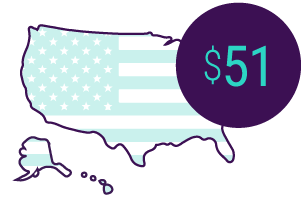 For every state and the District of Columbia where Checkology® is being taught.
For every state and the District of Columbia where Checkology® is being taught.
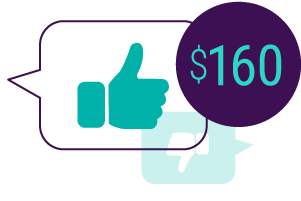 For each post on RumorGuard™ since its launch in October 2022.
For each post on RumorGuard™ since its launch in October 2022.
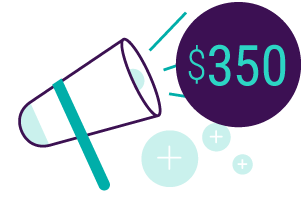 For every 1 million media impressions during National News Literacy Week, from public service announcements, social media and more — our most successful public awareness campaign to date.
For every 1 million media impressions during National News Literacy Week, from public service announcements, social media and more — our most successful public awareness campaign to date.
If you believe as we do that everyone deserves access to these skills, make a Giving Tuesday gift to support #NewsLiteracyNow.
You can also follow and share our #GivingTuesday social media posts (@newslitproject) or create your own to help amplify our reach.
Thank you for your generous support toward a future founded on facts — today and every day!
Utah school district develops a model for news literacy professional learning
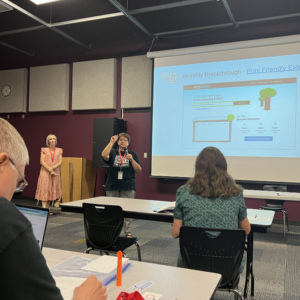 When it comes to natural beauty, Utah’s landscape never fails to impress. If you’re looking for that same reaction to the news literacy landscape, Utah’s Canyons School District delivers.
When it comes to natural beauty, Utah’s landscape never fails to impress. If you’re looking for that same reaction to the news literacy landscape, Utah’s Canyons School District delivers.
The school system created a professional learning initiative for teaching media and news literacy through NLP’s District Fellowship Program that has become a model for the state. “They have done a great job planning for a districtwide news literacy initiative. They have great district leads, discipline leads and educators who see news literacy education professional learning as their responsibility,” said Shaelynn Farnsworth, NLP’s senior director of education partnership strategy.
“We were already in discussion about how to improve information literacy, and NLP was an obvious choice for the partner,” Gretchen Zaitzeff said. She is the district’s library media specialist.
Hard work and serendipity
Lesli Morris, high school ELA specialist and a member of the district’s information literacy team, said Zaitzeff got the ball rolling. “Gretchen was at the forefront. She started us thinking about information literacy.”
Through Zaitzeff’s impetus, simultaneous efforts across the district and a dash of serendipity, the program fell into place. Morris became a member of NLP’s News Literacy Ambassador Program, which supports educators doing news literacy work in their communities. Utah passed legislation requiring civics education that included an information literacy component. (Retired teacher and school principal State Rep. Dan N. Johnson sponsored the legislation.) And the state awarded Jodi Ide, a high school social studies specialist, a competitive $250,000 grant for professional learning, which is part of the civics education legislation.
Support at the state level
The district also has a strong supporter at the Utah Department of Education in Davina Sauthoff, library media specialist lead. “Davina is a huge advocate of our work,” Farnsworth said.
Sauthoff said the district’s approach sets it apart. “I love how Canyons is building the capacity of information literacy skills with all educators, not just librarians or ELA teachers,” she said. “It’s a unique model to intentionally include all content area teachers from kindergarten through high school. I’m very excited about that.”
The initial year included 110 middle and high school educators in social studies and ELA, as well as teacher librarians and instructional coaches. They met in person or worked online asynchronously for eight months, voluntarily. This fall, secondary educators in all disciplines are participating. And next year, the program will expand to include elementary educators. That means teachers across grade levels and subjects in the 33,000-student district can join.
Sauthoff said Canyons’ program has inspired other districts that want to create similar initiatives. “Every district can choose to integrate news and media literacy the way they want. We find it important that districts build what makes the most sense for their communities,” she said.
Empowering educators
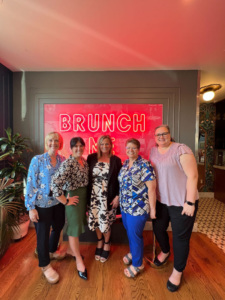 The response to the first year was overwhelmingly positive. Teachers read ahead in coursework and shared resources in school and with their families. Educator feedback indicated an interest in continued support and resources, which the team is incorporating.
The response to the first year was overwhelmingly positive. Teachers read ahead in coursework and shared resources in school and with their families. Educator feedback indicated an interest in continued support and resources, which the team is incorporating.
“This needs to be something built with a structure for sustaining it because this is essential to saving democracy,” Ide said.
Morris, the ELA specialist, agreed. “Our democracy will not survive if our citizens are not making accurate, informed decisions,” she said. “People act on the information they have. If they have poor information, their decisions might be poor.”
Annual report: Working toward a national movement
Today, we are sharing our annual report for fiscal year 2023 (July 2022-June 2023) with our stakeholders. The report showcases what we’ve achieved during the initial months of a four-year strategic plan to transform our mission into a movement. We hope you feel inspired reading about our progress. We appreciate the continued support from our community of news literacy champions who helped make this possible.
Read the report here.
By Greg McCaffery and Chuck Salter
As we’ve seen in recent years, the continued decline of local journalism, the rise of conspiratorial thinking around a wide variety of subjects, and persistent efforts to sow distrust regarding the 2020 election results have created an increasingly urgent threat to the country’s public life. Now, artificial intelligence looms as the latest challenge to knowing what to trust.
At a time when mis- and disinformation can cause harm on a scale previously unimaginable, news literacy empowers people with the skills to navigate our complex information landscape, mitigating the detrimental effects of falsehoods about public health, democracy, social cohesion, economics, climate change and more. By elevating news literacy as an essential skill for all, we not only protect the rights and well-being of individuals — we also safeguard the fundamental values that underpin society.
As we aim to build a national movement for a more news-literate country, we are especially proud of our accomplishments this past year.
Engaging more people with engaging resources
With your support, 13,450 educators in all 50 states used our news literacy resources, reaching an estimated 2 million students.
More than 34,000 people attended our live news literacy community learning events throughout the year, and we drew more than 8,000 educators to educator-specific events and trainings.
In October 2022, we launched RumorGuard™, an interactive website that fact-checks the latest rumors and provides concrete tips for building the news literacy skills necessary to confidently evaluate online content. The public also can sign up to receive RumorGuard alerts to help push back against misinformation. In its first nine months, the website had more than 390,000 unique visitors, more than double our expectations.
Our newest Checkology® virtual classroom lesson, “Harm & Distrust,” explores how mainstream news coverage of marginalized groups has historically done significant harm, resulting in legacies of mistrust that persist today. Using coverage of Black Americans as a case history, we explore the larger topic and bring it into focus for students. The lesson explains what aspects of the practice of journalism require trust, details the harmful coverage of Black Americans throughout history, and highlights the role of the Black press. Even as it draws attention to these challenges, “Harm & Distrust” clearly acknowledges the demonstrable progress that has been made in newsrooms across the country.
We hope you feel pride as you read these accomplishments and take heart in the growing community of people using our news literacy resources. Thank you for being a champion of NLP, and we hope you will continue to share our resources with your family and friends as we pursue a more civically engaged, information-savvy America.
Greg McCaffery is the chair of NLP’s board of directors.
Chuck Salter is NLP’s president and CEO.
Announcing our new on-demand educator learning platform
The News Literacy Project proudly introduces our brand-new, on-demand educational platform, NewsLitNation Professional Learning.
Designed for educators by the News Literacy Project’s Professional Learning team, NewsLitNation Professional Learning lets educators build news and media literacy skills on their own timeline and at their own pace.
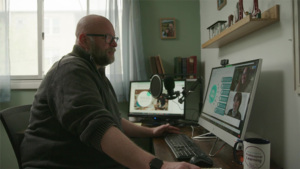
“We kept hearing from educators that they wanted to teach news literacy, but a lot of educators don’t necessarily know where to start,” said John Silva, NLP’s senior director of professional and community learning. “We built NewsLitNation Professional Learning to empower educators with that starting point, and with the flexibility they need so that they can use it when it fits into their schedule. They don’t have to wait for a professional development day.”
The curriculum, Essential Topics in News Literacy, consists of three courses exploring foundational news literacy topics:
- “Credibility in news and the standards of quality journalism.”
- “Exploring the misinformation landscape.”
- “Understanding and teaching news media bias.”
NewsLitNation Professional Learning is completely FREE and is an exclusive benefit for NewsLitNation members. Educators who are not already NewsLitNation members will become members automatically when they request enrollment and login details. (Our NewsLitNation educator community is also free, and gives educators access to other member benefits, including giveaways and opportunities to connect with our nationwide network of like-minded peers.)
Educators who pilot-tested the platform this summer called it “a welcome addition” and “really beneficial.” Another said, “I love the ability to learn when I have the available time and … to check my own understanding at the end.”
The News Literacy Educator Certificate
Educators who enroll in and complete the Essential Topics in News Literacy curriculum will be eligible to earn our News Literacy Educator Certificate, demonstrating the knowledge, skills and objectives necessary for teaching news literacy, as well as the ability to integrate it into existing curriculum with effective performance tasks, learning activities and assessments.
Interested? Visit the NewsLitNation Professional Learning page for more details and to register.
NLP’s newest ambassadors bring diverse backgrounds, expertise to their work
NLP’s News Literacy Ambassador Program kicks off the school year with its greatest reach and impact yet since its launch in early 2021. With 10 new educators on board, we now have 19 ambassadors advocating for news literacy education from New York to California, Michigan to New Mexico and several states in between.
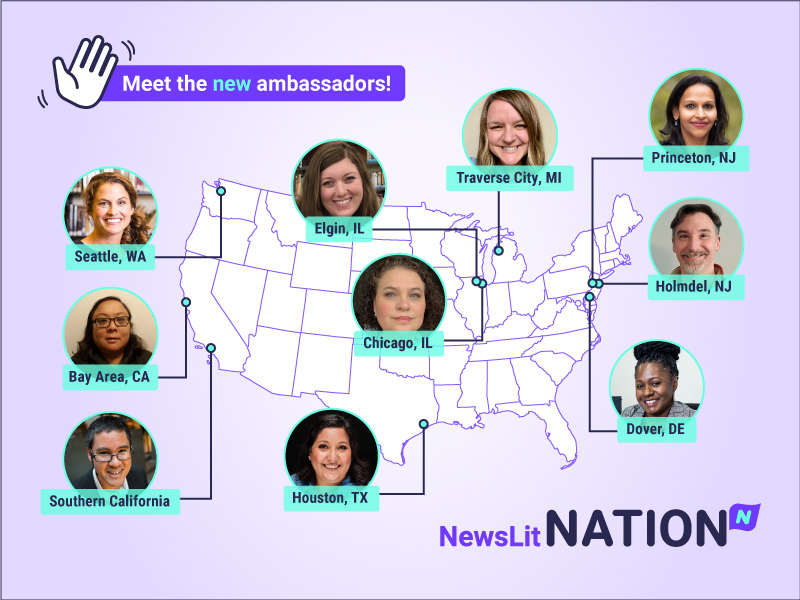
The new group of ambassadors includes award-winning journalists, authors and podcasters, and sought-after speakers and experts in their fields.
“We are so pleased to grow this program, as the ambassadors are at the heart of our NewsLitNation educator community,” said Miriam Romais, NLP’s director of NewsLitNation. “They are active educators themselves, so they understand the needs of their fellow teachers and librarians and make themselves available to work with their local schools, districts and boards of education to help address specific news and media literacy needs within their regions.”
Ambassadors work to advance news literacy in their communities and act as thought leadership partners to support the needs of educators in their districts. In these grassroots roles, they give presentations, organize learning events, hold student competitions and much more.
Each educator brings to their role ample classroom and library experience — as well as a commitment to better informed, engaged and empowered students. Meet our newest members, below, and read about all our ambassadors on the program web page.
California (Bay Area)
Merl Corpuz
Education specialist
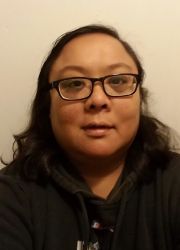 Merl Corpuz is an education specialist working in the San Francisco Bay area. She has worked in this capacity for the past 15 years. As an education specialist, she teaches core academic classes as well as world language to students with individualized education programs at various schools in the West Contra Costa Unified School District. It is her responsibility to differentiate learning material to the unique needs of each student on her caseload. In addition to core academics, she teaches financial literacy and is a Next Generation Personal Finance Distinguished Educator. Additionally, she has had the privilege of being an iCivics Teacher Facilitator fellow for Northern California this past year.
Merl Corpuz is an education specialist working in the San Francisco Bay area. She has worked in this capacity for the past 15 years. As an education specialist, she teaches core academic classes as well as world language to students with individualized education programs at various schools in the West Contra Costa Unified School District. It is her responsibility to differentiate learning material to the unique needs of each student on her caseload. In addition to core academics, she teaches financial literacy and is a Next Generation Personal Finance Distinguished Educator. Additionally, she has had the privilege of being an iCivics Teacher Facilitator fellow for Northern California this past year.
She earned her bachelor’s degree in political science with a minor in Middle Eastern studies from the University of California, Berkeley. Merl also holds moderate/severe and mild/moderate teaching credentials from the University of Massachusetts Global (formerly Brandman University). When not teaching, Merl enjoys reading, traveling and spending time with family.
California (Southern California)
Jason Hensley
Principal
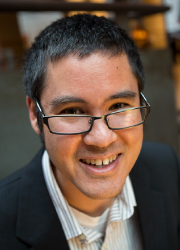 Jason Hensley, Ph.D., teaches language, history, public speaking and news literacy at the Heritage School, a private school in Los Angeles. He is a fellow of the Michael LaPrade Holocaust Education Institute of the Anti-Defamation League, a member of Civic Spirit’s teacher education cohort and the award-winning author of 12 books, including Part of the Family. His work has been featured in HuffPost as well as the BBC, and he has served as the historical advisor for a Holocaust documentary.
Jason Hensley, Ph.D., teaches language, history, public speaking and news literacy at the Heritage School, a private school in Los Angeles. He is a fellow of the Michael LaPrade Holocaust Education Institute of the Anti-Defamation League, a member of Civic Spirit’s teacher education cohort and the award-winning author of 12 books, including Part of the Family. His work has been featured in HuffPost as well as the BBC, and he has served as the historical advisor for a Holocaust documentary.
Delaware (Dover)
Renatae Burton
Social studies educator
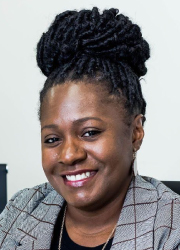 Renatae Burton is a middle school social studies educator at Campus Community School in Dover, Delaware, and an instructor at the Delaware Center for Distance Adult Learning. With a career spanning 12 years, Renatae initially shared the beauty of literature and language as a high school English teacher, leaving an indelible mark on countless students. Now, she has embarked on a new journey, bringing her expertise to middle school social studies.
Renatae Burton is a middle school social studies educator at Campus Community School in Dover, Delaware, and an instructor at the Delaware Center for Distance Adult Learning. With a career spanning 12 years, Renatae initially shared the beauty of literature and language as a high school English teacher, leaving an indelible mark on countless students. Now, she has embarked on a new journey, bringing her expertise to middle school social studies.
She has served as a board member for the Delaware State Education Association and on the National Education Association, where she was the Mid-Atlantic representative on the Standards and Practices Committee for two terms. Renatae received her bachelor’s degree in elementary education from Delaware State University and her master’s degree in nonprofit organizational leadership from Wilmington University.
Illinois (Elgin)
Jessica Wetendorf
Library media specialist
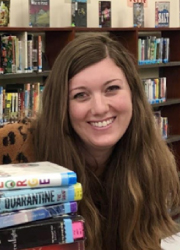 Jessica Wetendorf works for school district U-46, the second-largest school district in Illinois. She’s currently building library programs for the district’s alternative secondary schools. Her involvement in program development has led to her role as the media specialist representative for her district’s committee on middle school transition, which affects thousands of students.
Jessica Wetendorf works for school district U-46, the second-largest school district in Illinois. She’s currently building library programs for the district’s alternative secondary schools. Her involvement in program development has led to her role as the media specialist representative for her district’s committee on middle school transition, which affects thousands of students.
Jessica’s diverse educational background includes earning a bachelor of fine arts degree in 2005 from the world-renowned School of the Art Institute of Chicago, where she was honored by being the recipient of the Merit Grant. After graduation, she moved to California to work for a privately owned digital archivist company that supported artists’ work from across the country. While working as a digital archivist, Jessica earned a master’s degree in library and information science from San Jose State University in 2013. Since moving back to Illinois, she has earned a professional educator’s license from Dominican University and has worked as a library media specialist at several Illinois public schools.
Illinois (Chicago)
Alba Mendiola
Bilingual broadcast and journalism teacher
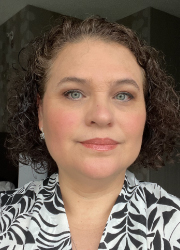 Alba Mendiola, a dedicated educator and experienced journalist, teaches Spanish-language arts and broadcast journalism to Spanish heritage speaker students at Cristo Rey Jesuit High School in Chicago. Before transitioning to the classroom, Alba had an 18-year successful career as a Spanish television reporter at Telemundo Chicago and Televisión Azteca in Veracruz, Mexico. Her investigative work earned her the prestigious Chicago Regional Emmy Award seven times, showcasing her dedication and talent in journalism. In 2021, Alba received an American Association of University Women grant, further acknowledging her commitment to professional development and growth. Her passion for education also led to her being named the Alan C. Miller Educator of the Year in 2023 by the News Literacy Project.
Alba Mendiola, a dedicated educator and experienced journalist, teaches Spanish-language arts and broadcast journalism to Spanish heritage speaker students at Cristo Rey Jesuit High School in Chicago. Before transitioning to the classroom, Alba had an 18-year successful career as a Spanish television reporter at Telemundo Chicago and Televisión Azteca in Veracruz, Mexico. Her investigative work earned her the prestigious Chicago Regional Emmy Award seven times, showcasing her dedication and talent in journalism. In 2021, Alba received an American Association of University Women grant, further acknowledging her commitment to professional development and growth. Her passion for education also led to her being named the Alan C. Miller Educator of the Year in 2023 by the News Literacy Project.
Born and raised in Mexico, Alba takes pride in her immigrant background. She holds a bachelor of science degree in communications from the prestigious institution Tec de Monterrey. More recently, she graduated from the University of Illinois at Chicago with a master’s degree in teaching, earning her professional educator’s license.
Beyond her roles as an educator and journalist, Alba actively engages with various organizations and institutions. She has served as a speaker, panelist and moderator at conferences organized by nonprofit organizations, universities and schools in both the United States and Mexico.
Michigan (Traverse City)
Danelle Brostrom
Educational technology coach
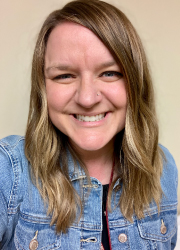 Danelle Brostrom is a K-12 educational technology coach for Traverse City Area Public Schools in Traverse City, Michigan. She also has worked as an elementary teacher, reading specialist and principal intern. Danelle was named by the International Society for Technology in Education as one of “20 to Watch in 2023” and is currently serving on the board of directors for the Michigan Association for Computer Users in Learning. She is the co-creator of the WIREDTC EdTech Conference and co-host of the Traverse City Area Public Schools’ Loop Weekly Podcast.
Danelle Brostrom is a K-12 educational technology coach for Traverse City Area Public Schools in Traverse City, Michigan. She also has worked as an elementary teacher, reading specialist and principal intern. Danelle was named by the International Society for Technology in Education as one of “20 to Watch in 2023” and is currently serving on the board of directors for the Michigan Association for Computer Users in Learning. She is the co-creator of the WIREDTC EdTech Conference and co-host of the Traverse City Area Public Schools’ Loop Weekly Podcast.
Denelle is a certified Google trainer and a known expert in digital wellness, technology ethics and student privacy. She has extensive experience designing and leading engaging learning opportunities for staff, students and parents and is well-versed in technology trends and applies a forward-thinking mindset so schools can best support all students.
New Jersey (Holmdel)
Steve Tetreault
Librarian
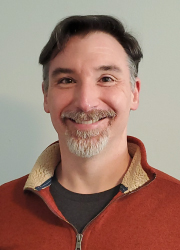 Steve Tetreault has been a teacher since 1998 and is currently a librarian at William R. Satz Middle School in Holmdel, New Jersey. After more than 20 years as an English language arts teacher for grades 7-12, Steve created and taught a required information literacy class for his seventh graders and made the transition into the library. He is a monthly contributor to the American Association of School Librarians’ Knowledge Quest site and was the host of the second season of School Library Connection’s One Lesson at a Time podcast.
Steve Tetreault has been a teacher since 1998 and is currently a librarian at William R. Satz Middle School in Holmdel, New Jersey. After more than 20 years as an English language arts teacher for grades 7-12, Steve created and taught a required information literacy class for his seventh graders and made the transition into the library. He is a monthly contributor to the American Association of School Librarians’ Knowledge Quest site and was the host of the second season of School Library Connection’s One Lesson at a Time podcast.
Steve has written for School Library Connection, Knowledge Quest, Publisher’s Weekly, American Libraries and other publications. He created SchoolLibrarianLearningNetwork.org, a site that collects free learning opportunities and resources of interest to school librarians. Steve is the chair of the New Jersey Association of School Librarians’ Professional Development Committee, as well as an amateur guitarist whose passion outpaces his skills. He has a master of education degree (2006) and a doctor of education degree (2014) in educational administration and supervision, as well as a master’s degree in library and information science (2019).
New Jersey (Princeton)
Aish Saminathan
Math, science and critical media literacy teacher
 Aish is a former journalist turned Montessori teacher at Princeton Montessori School in New Jersey. She teaches math and science for upper elementary students and critical media literacy for middle school students. Aish holds an undergraduate degree in physics, a master’s in English literature and a post-graduate diploma in journalism from the prestigious Asian College of Journalism in India. She also holds a Montessori diploma for Elementary I and II. Prior to her teaching career, she spent six years as a senior journalist with The Hindu, a leading English-language daily in India. Her journalistic journey, marked by over 300 published articles ranging from news reports to book reviews and feature stories, focused on rural education and the realms of arts and culture.
Aish is a former journalist turned Montessori teacher at Princeton Montessori School in New Jersey. She teaches math and science for upper elementary students and critical media literacy for middle school students. Aish holds an undergraduate degree in physics, a master’s in English literature and a post-graduate diploma in journalism from the prestigious Asian College of Journalism in India. She also holds a Montessori diploma for Elementary I and II. Prior to her teaching career, she spent six years as a senior journalist with The Hindu, a leading English-language daily in India. Her journalistic journey, marked by over 300 published articles ranging from news reports to book reviews and feature stories, focused on rural education and the realms of arts and culture.
This year, she was selected as one of 40 people in the United States to participate at the U40 Summit hosted by the American Montessori Society, where she collaborated on innovative approaches to shape the future of Montessori education. Aish is a regular contributor of education articles to AMS’s Montessori Life and its blog.
As a first-generation immigrant and a mother of two daughters, Aish is passionately dedicated to educating adolescents about information and misinformation in the digital age. She is committed to empowering her students to become change agents in society, arming them with the skills to navigate a complex world with discernment and wisdom.
Texas (Houston)
Sara E. Gonzales
Journalism teacher and advisor
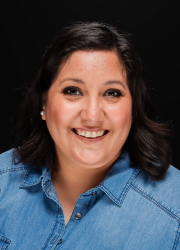 Sara E. Gonzales is a journalism advisor and teacher for Patricia E. Paetow High School in Katy, Texas. Her school’s publications have received national recognition and won the Columbia Scholastic Press Association’s Crown award and Interscholastic League Press Conference’s Star award. She has been recognized as a Journalism Education Association Diversity Award nominee and as an American Society of News Editors emerging leader. Sara has recently been named a 2023 UNT Scripps Howard Fund teaching ambassador. Sara received her bachelor’s degree in mass communication from Texas State University-San Marcos. She had an area of emphasis in electronic media and a minor in photography. Prior to graduating from college, Sara was a photographer for former President Bill Clinton and the Clinton Foundation in Little Rock, Arkansas.
Sara E. Gonzales is a journalism advisor and teacher for Patricia E. Paetow High School in Katy, Texas. Her school’s publications have received national recognition and won the Columbia Scholastic Press Association’s Crown award and Interscholastic League Press Conference’s Star award. She has been recognized as a Journalism Education Association Diversity Award nominee and as an American Society of News Editors emerging leader. Sara has recently been named a 2023 UNT Scripps Howard Fund teaching ambassador. Sara received her bachelor’s degree in mass communication from Texas State University-San Marcos. She had an area of emphasis in electronic media and a minor in photography. Prior to graduating from college, Sara was a photographer for former President Bill Clinton and the Clinton Foundation in Little Rock, Arkansas.
Currently, she serves as the Houston leader for the Online News Association and was the only teacher out of the country accepted into the American Society of News Editors Emerging Leaders Institute. Sara was also the only high school journalism advisor in the world to present at the World Journalism Education Congress in Paris, France, on diversity in scholastic journalism.
Washington (Seattle)
TuesD Chambers
Teacher librarian
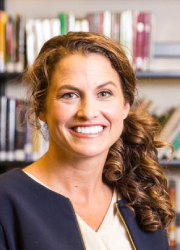 TuesD Chambers serves as a teacher librarian at Ballard High School in Seattle Public Schools. She has been an educator for over 24 years and earned her master’s in education in professional development and leadership with a media library endorsement. TuesD teaches digital leadership, literacy and 21st-century skills to students and was chosen as the Washington State Teacher Librarian of the Year for 2019.
TuesD Chambers serves as a teacher librarian at Ballard High School in Seattle Public Schools. She has been an educator for over 24 years and earned her master’s in education in professional development and leadership with a media library endorsement. TuesD teaches digital leadership, literacy and 21st-century skills to students and was chosen as the Washington State Teacher Librarian of the Year for 2019.
She has presented at the International Society for Technology in Education, South by Southwest EDU, and Oculus Connect 6 about the intentional use of technology to impact the learning and culture of a school. TuesD is a firm believer in the power of collaboration and works with teachers and librarians to create student-centered classrooms in her role as a content library specialist and adjunct professor for Antioch University. She loves to connect with other passionate educational leaders and welcomes the outreach.
Our election misinformation ads
At NLP, we believe that news literacy is essential for a functioning democracy. We know that foreign and domestic adversaries have polluted our information ecosystem to cause confusion, turn us against each other and hinder our ability to make well-informed decisions about candidates and issues. Our election misinformation campaigns help people learn how to tell fact from fiction. They’re not about what to think, but about how to think about the news and information we encounter.
As part of our 2022 election misinformation campaign, we created a public service announcement (PSA) to help people find our resources and credible sources of news and information. The TV ads refer to Election Day, Nov. 8, 2022. They do not contain current information for elections this year or in 2024. We asked stations to cease airing the ads last year, after Election Day. However, we recently become aware that some TV networks have continued to air them. We are doing everything we can to have the ads taken off the air while we update them.
Be sure to follow us on social media and subscribe to our newsletters for updates about our 2024 election misinformation campaign, including a new PSA to help voters stay informed.
On Democracy Day, preparing for difficult conversations that build trust
The spread of misinformation, an erosion of trust in standards-based news organizations and deepening political polarization continue to pose major threats to American democracy. In an effort to confront these threats, journalists around the country on Sept. 15 are observing Democracy Day, publishing stories that explain how democracy works and encouraging greater civic participation among readers, viewers and listeners.
The Center for Cooperative Media launched the effort last year to coincide with the International Day of Democracy, which is designated by the United Nations as an annual event to review the state of democracy in the world.
Participating news outlets are publishing stories and op-eds today that cover election processes, voting rights, civic engagement and explanatory reporting on how newsrooms are covering elections and public policy issues.
This Democracy Day, the News Literacy Project also is joining the effort, announcing two events intended to help everyone build understanding and trust in our democracy within their own networks of influence.
We’re teaming up with the National Institute for Civil Discourse and the League of Women Voters to host two free public webinars about how to talk to loved ones who share misinformation.
It can be difficult to know how to respond when a friend or family member shares a viral hoax, fabricated photo or conspiracy theory. As we prepare for the holiday season and a presidential election in 2024, we can expect to encounter rumors and falsehoods, as well as heated debate.
Our webinar, Productive conversations without confrontation, will offer strategies for productive, civil conversations – especially when discussing misinformation.
Register now

We’re hosting two different sessions of the same webinar – pick the date and time that works best for you.
Session 1 is at 4 p.m. ET/1 p.m. PT Tuesday, Oct. 24. Session 2 is set for 7 p.m. ET/4 p.m. PT Thursday, Nov. 16 – one week before Thanksgiving.
Register for the October session here. Register for the November session here.
DeMario Phipps-Smith, senior manager of community learning at NLP, will be joined by Dr. Carolyn Lukensmeyer, director emeritus of the National Institute for Civil Discourse, and Chelsey Cartwright, program director for the League of Women Voters Democracy Truth Project.
They will discuss tools for debunking misinformation, setting the table for productive conversations, the basics for talking about falsehoods, how to build coalitions and communities that value credible information and why it’s important to have these difficult conversations.
We hope you’ll join us this fall.
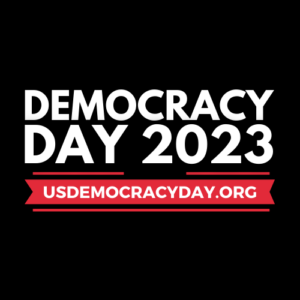 In the meantime, read Democracy Day reporting from around the country here.
In the meantime, read Democracy Day reporting from around the country here.
This article is part of U.S. Democracy Day, a nationwide collaborative on Sept. 15, the International Day of Democracy, in which news organizations cover how democracy works and the threats it faces. To learn more, visit usdemocracyday.org.
Library of Congress honors News Literacy Project with its highest award
Rubenstein Prize recognizes efforts to improve literacy in the U.S. or abroad
NLP today received the highest honor from the Library of Congress Literacy Awards Program, the David M. Rubenstein Prize, in recognition of NLP’s outstanding efforts to help people of all ages identify misinformation and help stop its spread.
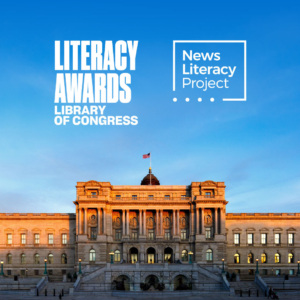 The awards are given annually on Sept. 8, which UNESCO has designated as International Literacy Day. The David M. Rubenstein Prize goes to an organization that has shown an “exceptional and sustained” commitment to advancing literacy while meeting “the highest standards of excellence in its operations and services.” Past awardees include Dolly Parton’s Imagination Library and Reading is Fundamental. NLP, a national nonpartisan education nonprofit, is the leading provider of news literacy education, offering free resources, tools and programs for educators and the public.
The awards are given annually on Sept. 8, which UNESCO has designated as International Literacy Day. The David M. Rubenstein Prize goes to an organization that has shown an “exceptional and sustained” commitment to advancing literacy while meeting “the highest standards of excellence in its operations and services.” Past awardees include Dolly Parton’s Imagination Library and Reading is Fundamental. NLP, a national nonpartisan education nonprofit, is the leading provider of news literacy education, offering free resources, tools and programs for educators and the public.
“The News Literacy Project is committed to ensuring a future founded on facts. The David M. Rubenstein Prize is a testament to the real, measurable impact of our programs. We are honored to receive this recognition from the Library of Congress,” said Charles Salter, president and CEO of NLP.
About the award
Established in 2013 and generously supported by philanthropist David M. Rubenstein, the Library of Congress Literacy Awards Program recognizes organizations that provide exemplary, innovative, sustainable and replicable strategies to promote literacy and reading. The Literacy Awards also include an American Prize and International Prize. Up to 15 organizations each year are named Successful Practices Honorees. For additional information about the awards and previous winners, as well as an interactive program map, visit the Library of Congress website.
Back to school with NLP and TIME for Kids
The News Literacy Project and TIME for Kids are teaming up this school year to bring educators seven weeks of news literacy resources and lessons. From September through mid-October, the upper elementary editions of the TIME for Kids teacher’s guide will feature classroom-ready materials that highlight the magazine’s journalism and NLP’s free resources.
Intended for grades 3 – 6, the lessons explore how to distinguish between facts and opinions; identify different types and purposes of information, like advertising and news; recognize the standards of quality journalism, and more. Each lesson builds foundational news literacy skills and provides opportunities for students to apply those skills through rich discussion prompts, collaborative group activities and challenging independent work. NLP’s Hannah Covington and Pam Brunskill co-created the materials along with Candace Dipsey of TIME for Kids. See the whole unit at ti.me/MediaLitUnit.
“This is an exciting collaboration that brings together the expertise of the News Literacy Project and TIME for Kids educators, whom we know understand the importance of teaching students how to identify credible sources of news and information,” said Peter Adams, NLP’s senior vice president of research and design.
To help educators take advantage of these and other instructional resources, TIME for Kids will offer a 20% discount to members of NLP’s NewsLitNation®, a free member community of news literacy education practitioners. Educators can join NewsLitNation now to take advantage of this offer. Members will also be entered into a drawing for a free classroom subscription to TIME for Kids, provided by the magazine. More details about how to enter and how to take advantage of the discount offer will be shared soon with the NewsLitNation community.
About TIME for Kids
Built on TIME’s long legacy, TIME for Kids has been a trusted news source for nearly 30 years, publishing a weekly current events magazine for kids during the school year as well as expanding into a global multi-channel education brand.
TIME for Kids builds the critical reading skills kids need to succeed in the information era. An annual subscription helps young readers better understand our complex world, and nurtures them to become informed, active citizens.
Science teacher couldn’t have planned it any better
His course was ready to meet new media literacy requirement
Illinois high school educator Tom Foss credits his experience with both skeptics and conspiracy theorists and a background in science and humanities for preparing him to teach media literacy.
“I used to be active in scientific skepticism circles. I did presentations on chain letters, scams and conspiracy theories. That was my window in, and I think a lot of critical thinking is just scientific thinking,” said Foss, who teaches chemistry, physical science and physics to grades 9-12 at Newark Community High School in rural Illinois.
Having majored in physics and English in college, he brings these dual perspectives to the classroom. Nearly a decade ago, he began assigning research projects to his chemistry students and included a lesson on how to find reliable scientific sources. Then the pandemic hit, suspending in-person classes. “I needed something to teach on our remote days,” Foss said.
He found the Stanford History Education Group’s Civic Online Reasoning resources and other material for teaching students how to determine the credibility of sources and information. By the end of the 2020-21 school year, he had built a curriculum that brought a science lens to media and news literacy, but he had no place to fit it into his courses.
“I saw much more retention and deeper thinking and more tangible results by doing this as an extended process. This made it really clear we needed more than one unit,” he said.
Mandating media literacy
Foss spoke with teachers who recognized the value of his approach and then learned that Illinois was about to pass a law requiring media literacy instruction beginning in the 2022-23 school year. Foss called it serendipity, but at his school his work was more like the catalyst for a news literacy chemical reaction — a process that generates products which then sustain that process.
With a curriculum in hand, media literacy became a semester-long required class for freshmen at his school in fall 2022. When researching resources for the new class, Foss discovered the News Literacy Project and its Checkology® virtual classroom, which helped him bring a comprehensive approach and common vocabulary to the course. Among the Checkology lessons he teaches are “InfoZones,” “Misinformation,” Understanding Bias” and “Making Sense of Data.”
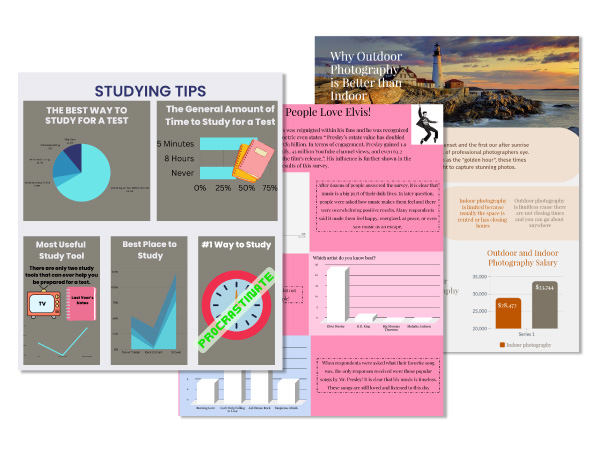
Work done by students in Foss’ class.
Foss wants his students to understand that things often are more complicated than they seem, with a greater level of complexity underneath. “The simple narratives are almost always obfuscation. You should always question simple things that feel right,” he tells his students. He wants them to have the skills to analyze information, find credible sources and be open to changing their minds when confronted with evidence that contradicts their beliefs. “That’s a really hard thing for anyone to do.”
The course has opened students’ eyes to the darker elements of the internet. They are surprised to discover how easily their privacy can be violated, how little control they ultimately have over what they post and how seamlessly legitimate content can be turned into misinformation.
“They’ll notice a deepfake edit but they’ll miss the caption that gives it false context. I tell them the easiest way to fool you doesn’t require Photoshop or After Effects, it can take only a few words,” he said. “I’m really proud when I start seeing the kids make distinctions between what they’re being told and what they’re seeing.”
Artificial intelligence a new challenge
This skill is particularly important given the ways artificial intelligence is making it increasingly difficult to tell what’s real and what’s not. And that goes for educators, too, as students have always found hidden ways to get others to help with assignments. Up to now such interference has been decidedly analog. “It’s more that kids have their friends do their homework. The original AI.” Foss quipped.
Before the 2022-23 school year even ended, he was thinking about ways to improve his curriculum for the fall. He’ll create a “bell ringer” activity to start each class; he’ll tweak the lesson sequence; pare down some sections and beef up others, and give students a more active role. “I want them to do more hands-on work rather than listening to me talk,” he said.
And Foss can’t wait to see what lasting impacts media and news literacy competency has on his students. “I’m really interested to see this group of freshmen four years from now when they do their senior capstone [research] projects.”
NLPeople: Pam Brunskill, senior manager of education design
This is part of a series that introduces you to the people of NLP.
Pam Brunskill
Buffalo, New York
1. Can you tell us what led you to the news literacy movement?
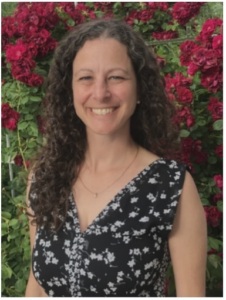 In 2016, I was getting most of my news from Facebook, and I didn’t fully appreciate the impact of that decision until the aftermath of the presidential election. That’s when I realized I was getting different information than some of my friends and family, as well as some untrustworthy information. While I intrinsically realized that social media’s algorithms led to echo chambers and was scattered with misinformation and disinformation, I didn’t yet know how to navigate this digital landscape well. So, I started to actively seek out credible information about social media and news consumption, and through a freelancing job stumbled upon the News Literacy Project. This was the first step in a journey of taking control of my media diet and starting to recognize standards of quality journalism. The more I learned, the more I wanted to be a part of this movement full time.
In 2016, I was getting most of my news from Facebook, and I didn’t fully appreciate the impact of that decision until the aftermath of the presidential election. That’s when I realized I was getting different information than some of my friends and family, as well as some untrustworthy information. While I intrinsically realized that social media’s algorithms led to echo chambers and was scattered with misinformation and disinformation, I didn’t yet know how to navigate this digital landscape well. So, I started to actively seek out credible information about social media and news consumption, and through a freelancing job stumbled upon the News Literacy Project. This was the first step in a journey of taking control of my media diet and starting to recognize standards of quality journalism. The more I learned, the more I wanted to be a part of this movement full time.
2. Since joining NLP, what has been the most satisfying or surprising experience?
My colleagues are some of the most competent, supportive and thoughtful people I’ve ever had the pleasure to work with. While the work we do here is meaningful, the people make the work enjoyable. Being valued and doing something of value is the most satisfying experience.
3. What news literacy tip, tool or guidance do you most often use?
Control-F is probably the tool I use most often, as it helps me find what I’m looking for quickly in web pages (and documents). I lived an embarrassing number of years without knowing hitting Control + F at the same time allows one to search for a specific word or phrase. I used to skim articles and it would take an inordinate amount of time and frustration. Now, if I’m trying to remember where I read about a specific person or idea, or if I’m trying to determine if something is mentioned in a specific page, I can hit Control-F and type in those words to quickly discern whether a text includes what I’m looking for.
4. You have authored several books, including one on information literacy, and you founded a company that created curriculum resources for authors and publishers. Have those experiences informed your work with NLP?
Absolutely. Developing curriculum resources is a mix of science and art. When I wrote my books and developed resources, I had to keep in mind the audience, the purpose and the main objectives. The same holds true with developing resources at NLP, but having the experience of creating these books and other resources first allowed me to better understand the parameters and scope of a project, in addition to little tips like how to format a document. These types of considerations are more methodical, and what I consider the “science” of curriculum development. But then comes the part that’s unique to the project, the “art.” How should we focus the story, lesson, etc.? How will we get the audience engaged? When I worked alone, I usually turned to my family and critique partners to get feedback. Here at NLP, there are numerous people on staff and in the larger education world I turn to for input at various stages of work. This is really a question about craft, a question all creatives — including educators (another part of my background) — can relate to. It’s about how we build something seemingly out of thin air, but in reality, is based on personal background, influences and feedback from respected stakeholders.
5. Aside from fighting for facts, what else are you passionate about?
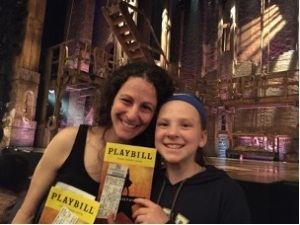 I love books, theater and dance. I just finished Amanda Ripley’s High Conflict, and I think it should be required reading for every adult. It discusses how we get pulled into situations that make us lose our minds, how conflict can take over and how we get out. It is probably the best nonfiction book I’ve read in a decade. When I’m not reading, I’m frequently humming songs in my head. While it’s a constant rotation, showtunes from Hamilton and Wicked often enter that space. I love going to musicals, and my idea of a perfect vacation involves lots of Broadway shows. It would not be out of the ordinary to catch me dancing just about anywhere to these songs or others (even if they’re only playing in my head). Growing up, I took tap, jazz, ballet and lyrical. In college, I started line dancing. Later in life I tested out West Coast Swing, and most recently, Salsa! I’m down with anything that has a good beat.
I love books, theater and dance. I just finished Amanda Ripley’s High Conflict, and I think it should be required reading for every adult. It discusses how we get pulled into situations that make us lose our minds, how conflict can take over and how we get out. It is probably the best nonfiction book I’ve read in a decade. When I’m not reading, I’m frequently humming songs in my head. While it’s a constant rotation, showtunes from Hamilton and Wicked often enter that space. I love going to musicals, and my idea of a perfect vacation involves lots of Broadway shows. It would not be out of the ordinary to catch me dancing just about anywhere to these songs or others (even if they’re only playing in my head). Growing up, I took tap, jazz, ballet and lyrical. In college, I started line dancing. Later in life I tested out West Coast Swing, and most recently, Salsa! I’m down with anything that has a good beat.
6. Are you on team dog, team cat, team wombat?
 Definitely team dog. Olli has been a steady companion for almost 17 years, going for walks and keeping me company while I work. We rescued Mara, most likely a Staffordshire terrier, in 2020 during the pandemic. Both dogs love to go to the dog park and try to sneak food, and both are very sweet.
Definitely team dog. Olli has been a steady companion for almost 17 years, going for walks and keeping me company while I work. We rescued Mara, most likely a Staffordshire terrier, in 2020 during the pandemic. Both dogs love to go to the dog park and try to sneak food, and both are very sweet.
7. And last, but not least, what item do you always have in your fridge?
Cream cheese because my family eats lots of bagels with cream cheese.
Alicia Shepard’s legacy as a ‘journalist’s journalist’ and news literacy champion
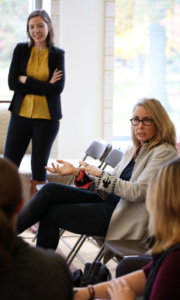 The vantage point from which journalist Alicia C. Shepard witnessed the world was both stunningly heartfelt and sharply intelligent — a filter that colored her career, her life, and her extensive work as one of the earliest classroom volunteers for the News Literacy Project.
The vantage point from which journalist Alicia C. Shepard witnessed the world was both stunningly heartfelt and sharply intelligent — a filter that colored her career, her life, and her extensive work as one of the earliest classroom volunteers for the News Literacy Project.
“She was a journalist’s journalist,” said NLP Founder Alan C. Miller. “She was smart, tough and uncompromisingly honest.”
Shepard died April 1 from lung cancer. She was 69 and is survived by her husband, David Marsden, and son, Cutter Hodierne, from her first marriage.
Known to friends as “Lisa,” she served as NPR ombudsman from 2007 to 2011. By then, her byline was well known from her work at Scripps League Newspapers, the San Jose Mercury News, and the American Journalism Review. Her book, Woodward and Bernstein: Life in the Shadow of Watergate, further secured her position as a thought leader in the industry.
Grace under pressure
A few years after NLP’s founding in 2008, Shepard met Miller and became one of scores of journalists to enthusiastically volunteer to go into middle and high schools in the Washington D.C., region, New York City and Chicago for the organization’s foundational classroom program.
“We told the journalists to think of the students as consumers of news and other information and to give them the tools to determine what to trust, what to share and what to act on,” Miller said. “Lisa totally got this.”
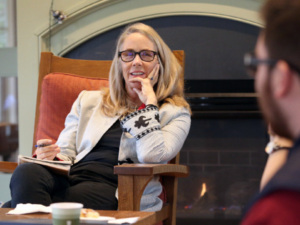 This was never more evident than the day she visited Bethesda Chevy Chase High School in a Maryland suburb of Washington, where, by all accounts, Shepard showed incredible grace under pressure.
This was never more evident than the day she visited Bethesda Chevy Chase High School in a Maryland suburb of Washington, where, by all accounts, Shepard showed incredible grace under pressure.
The class proved to be an ordeal as two of the students were so disruptive, they were sent home.
“Lisa was not thrown. She didn’t miss a beat,” Miller said. “She sought to bring them into the discussion and proceeded with her presentation that day, and beyond, with the intensity and intelligence that were her trademarks.”
Shepard’s involvement had a significant impact on Darragh Worland, who had just joined NLP as coordinator of the New York City classroom program and witnessed firsthand Shepard’s skillful handling of the challenging classroom situation.
“The Venn diagram between skills inherent in journalists and those in teachers overlaps considerably,” said Worland, who is now NLP’s senior vice president of creative strategy. “A lot of it is explaining complex concepts, breaking them down. She brought that sort of heft to the organization.”
Dispatches at sea
Shepard earned a bachelor’s degree in English literature from George Washington University in 1978 and began her career as a journalist in the Washington bureau of Scripps League Newspapers.
Following a move to California and five years as a reporter at the San Jose Mercury News, she and her first husband sold their belongings and purchased a boat, embarking on what would become a three-year journey in the South Pacific with their 9-month-old son.
Throughout the trip, Shepard filed dispatches with the Mercury News and The Washington Post. Then, after two years as a teacher in Japan, she returned to the United States, settled in Arlington, Virginia, and continued writing, taking on such controversial topics as the use of anonymous sources and lucrative speaking fees for journalists for the American Journalism Review.
In 2002, she earned a master’s degree in journalism from the University of Maryland and that same year, co-authored Running Toward Danger: Stories Behind the Breaking News of 9/11 for the Newseum, commemorating the work of journalists covering the 2001 terrorist attack.
“She embodied the highest ideals of a standards-based news organization,” Worland said. “To have someone like her speaking on behalf of NLP and educating students is one of the reasons the organization has the esteem that it does.”
A natural educator
Shepard was a natural educator. Over the years, she taught at Georgetown University, American University, Duke University, the University of Texas at Austin, the University of Nevada at Las Vegas, the University of Arkansas, and California Polytechnic State University.
She was a longtime proponent of the need to increase diversity in journalism. She volunteered for about a decade each summer to teach students the basics of journalism through the Urban Journalism Workshop, sponsored by the Washington Association of Black Journalists.
Prior to one of her initial classroom visits for NLP, Shepard asked the teacher to instruct the students to find out everything they could about her. When Shepard asked the students what they had discovered, one named the street on which she lived, another said she currently taught at American University and a third said she had attended her high school reunion. All three statements were wrong.
“You absolutely have to check out all information and make sure it’s accurate,” Shepard told the surprised students. She then shared the journalistic maxim “If your mother says she loves you, check it out.”
Hodierne, 36, and a filmmaker, said this was “a prism into how she saw the world.” He recalled that she constantly asked others, “How do you know that?”
Legacy Society bequest
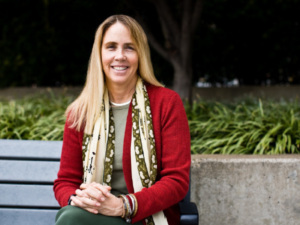 Beyond her presence in the classroom, Shepard demonstrated support for NLP in other ways. In 2012, she brought her talents to a cooperative project with the American Library Association and subsequently traveled to Beirut, Lebanon to explore creating a news literacy training program at several universities in collaboration with the ALA. She also wrote about NLP and media literacy.
Beyond her presence in the classroom, Shepard demonstrated support for NLP in other ways. In 2012, she brought her talents to a cooperative project with the American Library Association and subsequently traveled to Beirut, Lebanon to explore creating a news literacy training program at several universities in collaboration with the ALA. She also wrote about NLP and media literacy.
Marsden, Shepard’s longtime partner whom she married in 2021, said that her work with NLP was a logical extension of a career focused on journalism and ethics and education. “She always seemed to come back to news literacy,” he said. “She felt very proud of the way [NLP] was growing and expanding.”
In 2014, Shepard became a monthly donor to NLP, a process that continued until her passing — making hers one of the longest-running commitments in the history of the organization. She is recognized as a member of NLP’s Legacy Society as well, after having bequeathed a portion of her estate to the organization.
“Lisa engaged, inspired, and informed scores of educators and students as a passionate advocate for news literacy,” Miller said. “Her generous bequest will now support NLP’s work as the final piece of her meaningful legacy with us.
Learning news literacy from a fresh perspective – lessons from our popular PitchIt! student contests
With misinformation, doctored images, and AI-generated misleading photos and videos spreading on social media, young people need news literacy skills now more than ever. For the past three years, an essay contest sponsored by the News Literacy Project has encouraged students to fact-check online content and seek out credible sources, helping them become responsible and informed news consumers.
The PitchIt! student essay competition challenges students to write short essays in response to one of six prompts using a news event as a focus. Students need to think through questions that address topics such as First Amendment protections for the press, how news consumers can fact-check statements from public figures, why sharing reliable information is a civic responsibility and the consequences of spreading misinformation online.
Once students have completed their essays, each participating school and/or educator chooses middle school and high school entries to submit. Ambassadors from NewsLitNation® or NLP’s staff review the submissions, awarding first through third place for the essays. The selected students then move to the “pitch” phase, presenting ideas, arguments and examples from their essays to a panel of professional journalists, who provide real-time feedback and select the grand prize winners.
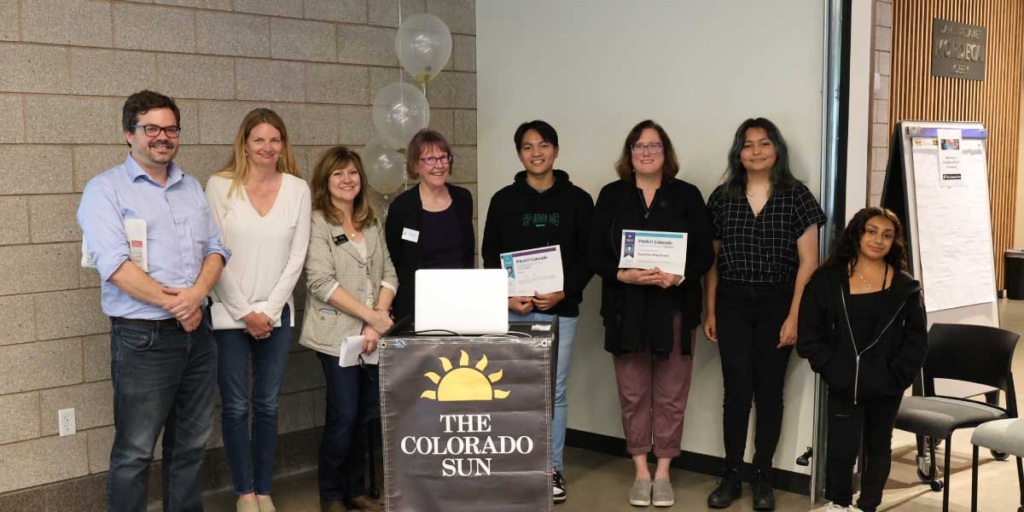
The Colorado PitchIt! State Championship, held May 15 and hosted by The Colorado Sun, included, from left: Political consultant Tyler Sandberg, Jennifer Brown of The Colorado Sun, Colorado State Sen. Lisa Cutter, Sandra Fish of The Colorado Sun, student Van Dao, educator Raylene Kaufman, and students Adriana Ramirez-Diaz and JoLene Urioste. Photo credit: Miriam Romais, the News Literacy Project.
PitchIt! was launched in 2020 by Florida NLP ambassador Monica Valdes and has grown each year since then, said Miriam Romais, NewsLitNation director. NLP partnered with Miami-Dade County Public Schools for previous contests and teamed up this year with The Colorado Sun and the Colorado Language Arts Society for a first in-person PitchIt! event to award a state champion title. NLP is hoping to expand the contest again in 2024, Romais said, giving more young news consumers hands-on experience accurately assessing the news in a complex information landscape.
“Being assigned the PitchIt! essay is just the start of the students’ thinking process, involving research, fact-checking, credible sourcing and critical thinking skills,” Romais said. The news literacy prompts provide the opportunity for students to work closely with their teachers to produce original analyses and fresh perspectives on their chosen topic. Then, when selected students get to the grand prize stage, “they must distill their ideas further to present their concepts to a panel of journalists for live feedback,” Romais said.
Citing sources to support facts
This year’s contest, held in May, drew some 350 students and 14 of their teachers from Colorado, Florida and New York and one county in Pennsylvania. Thirty-one students made it to the finalist stage. Of those, 13 appeared before a panel of journalists to distill their essays into three-minute oral presentations.
In an entry illustrated with maps and detailed images to drive home her points, Miami 10th grader Saffron Carson highlighted coverage of figures as disparate as former Secretary of State Hillary Clinton and singer Courtney Love when responding to the prompt, “How can we become responsible consumers and producers of news and information?” Saffron had a warning for all: “Sources that are found to provide unreliable information of any kind are likely to lose their credibility. … Distrust is not only limited to mass media outlets. … By spreading unreliable information, individuals are putting their own credibility at stake.” Saffron earned the grand prize from her state.
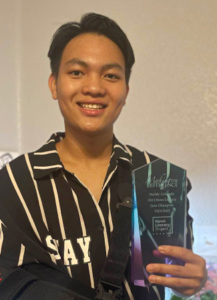 Students were judged in part on their use of sources to support their facts — a key element of credibility in reporting. Van Dao (pictured left), a 10th grader from Colorado, explored misinformation surrounding the Feb. 3 freight train derailment in Ohio. Debunking a TV personality’s commentary that, as Van wrote, “focuse[d] on the consumers’ emotion” rather than facts, Van cited accurate coverage by The Associated Press and NPR and referred to FactCheck.org, PolitiFact and Snopes as sites to use in trying to verify information. Van was the state champion.
Students were judged in part on their use of sources to support their facts — a key element of credibility in reporting. Van Dao (pictured left), a 10th grader from Colorado, explored misinformation surrounding the Feb. 3 freight train derailment in Ohio. Debunking a TV personality’s commentary that, as Van wrote, “focuse[d] on the consumers’ emotion” rather than facts, Van cited accurate coverage by The Associated Press and NPR and referred to FactCheck.org, PolitiFact and Snopes as sites to use in trying to verify information. Van was the state champion.
Van’s teacher, Raylene Kaufman, said her student had worked both hard and smart: “Van researched longer and more complex articles on this subject. We held many writing conferences because he wanted to be sure that he was reading and writing about the information clearly.”
Romais noted that educator collaboration with participating students is a key part of the learning. “The teacher practices with them. We encourage that partnership as they work on reading, writing and public speaking skills.”
Saffron’s teacher, Renee Cantave, told NLP in an email that the contest opened the door for her to use NLP’s free news literacy resources in her teaching. “Integrating PitchIt! in my classroom has been a SPECTACULAR experience that I would not trade for the world. Seeing my students realize the power of words and access to accurate information is invaluable. The resources offered in the NewsLit community are so helpful for everyone. I hope educators take this opportunity to apply the concepts that are being taught.”
The collaboration also is reflected in students’ deeply researched and creative presentations. Stevie D. Rosenfeld, an 11th grader, chose to answer this prompt: “How do confirmation bias, stereotyping and other cognitive biases impact how we interpret events, news and information?” Her PowerPoint response included images of newspapers retrieved from archives, winning her the high school grand prize in the New York contest. She displayed headlines about the 1898 sinking of the battleship USS Maine as well as coverage of the Jan. 6 attack on the U.S. Capitol and the Black Lives Matter movement to highlight starkly different language used by various outlets to cover the events.
Recognizing biases
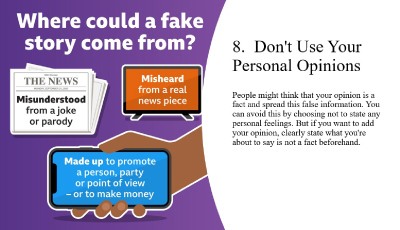 Miami sixth grader Naomi Celestin’s winning entry (pictured right) addressed this prompt: “Explain which news literacy skills are essential to responsible civic participation.” She wrote, “Providing reliable information should be a responsibility” — and, she noted, news consumers also are accountable for making sure a source is reliable. “Check if the source is one-sided or if the source is providing facts, not opinions.”
Miami sixth grader Naomi Celestin’s winning entry (pictured right) addressed this prompt: “Explain which news literacy skills are essential to responsible civic participation.” She wrote, “Providing reliable information should be a responsibility” — and, she noted, news consumers also are accountable for making sure a source is reliable. “Check if the source is one-sided or if the source is providing facts, not opinions.”
For her presentation, eighth grader Jorja Jackson of New York wrote about misinformation: “We all have biases, whether conscious or unconscious, but having biases doesn’t make us bad people. However, when we choose to not recognize these biases that are influenced by societal stereotypes and our upbringing, we risk not understanding the real world around us.”
Asked why she picked the topic, Jorja said in an email that this subject “truly resonated” with her in that “biases we as a society have … affect the spread of misinformation.”
It’s the second year of participation in PitchIt! for Jorja’s teacher, Terence Higginson, who named several benefits in addition to what can be gained from the year-round news literacy coursework.
“First, our students can measure their writing skills against other participants in the competition, which allows them to recognize their unique talents, while also acknowledging the tremendous talents of other writers in the competition,” Higginson said. “Another wonderful benefit is the oral portion of the competition where our students are given the opportunity to be self-reflective about their writing experiences, which is an invaluable talent for them to develop for their future academic endeavors.”
NLP news literacy ambassadors helped review the essays for accuracy, readability and creativity, handing out first-, second- and third-place awards. Those winners went to the next stage of the competition: judging by journalists who selected the grand prize for the state. Grand prize winners earned gift cards or trophies.
“For those interested in participating in PitchIt! next year,” said Romais, “consider contacting your local news literacy ambassador. Or become one!”
Winners
- Colorado State Champion: Van Dao, high school; teacher: Raylene Kaufman
- Florida Grand Prize winners: Naomi Celestin, middle school; teacher: Tai-Li Frazer.
Saffron Carson, high school; teacher: Renee Cantave - New York Grand Prize winners: Jorja Jackson, middle school; teacher: Terence Higginson. Stevie D. Rosenfeld, high school; teacher: Brittany Kaminski
- Pennsylvania-Allegheny County Grand Prize winner: Amya Wise, high school; teacher: Deborah Domingues-Murphy
Contest jurors
Allegheny County, Pennsylvania:
- Anya Litvak, energy reporter, Pittsburgh Post-Gazette
- Arturo Fernandez, assistant managing editor, visuals and interactive, Pittsburgh Post-Gazette
Florida:
- Tamoa Calzadilla, editor in chief, Factchequeado
- Sommer Brugal, K-12 education reporter, Miami Herald
New York:
- Tandy Lau, public safety reporter, New York Amsterdam News
- Jessica Gould, education reporter, WNYC
- Lily Rothman, managing editor, Time
Colorado:
- Jennifer Brown, co-founder and reporter, The Colorado Sun
- Sandra Fish, reporter, The Colorado Sun
- Lisa Cutter, Colorado state senator
- Tyler Sandberg, political consultant
NLP’s news literacy ambassadors and event organizers:
- Monica Valdes, Florida (creator of event)
- Amanda Escheman, Colorado
- Alesha Smith, New York
- Deborah Domingues-Murphy, Pennsylvania
NLPeople: Natalie Quan, senior manager of database operations
Natalie Quan
Calgary, Alberta, Canada
This is part of a series that introduces you to the people behind the scenes at the News Literacy Project.
1. Can you tell us what brought you to NLP?
I came to NLP for a few different reasons, the main one being that I care immensely about facts and truth. If we don’t have those, what do we really have at all? If we can’t agree on reality, how are we supposed to experience or accomplish anything meaningful? Facts are the foundation for a functional society. Truth can be healing and transformative. Further, I think facts and truth are inextricable with justice and equity, and those are very important values to me personally.
2. Since joining NLP, what has been the most satisfying or surprising experience?
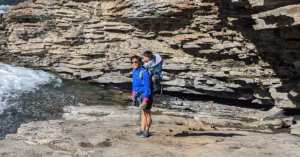 Without question, the best part of working at NLP for me is my team. We operate with so much mutual respect and trust. Even in the face of chaos, we tackle challenges efficiently and effectively to keep driving the mission forward. I’ve never worked with such a competent yet humble group of people who treat one another with so much grace. And while we take our work very seriously and work incredibly hard, we always find a way to have fun doing it.
Without question, the best part of working at NLP for me is my team. We operate with so much mutual respect and trust. Even in the face of chaos, we tackle challenges efficiently and effectively to keep driving the mission forward. I’ve never worked with such a competent yet humble group of people who treat one another with so much grace. And while we take our work very seriously and work incredibly hard, we always find a way to have fun doing it.
In addition, I’m continually pleasantly surprised by how much my work engages me. I’ve been at NLP for almost five years now, longer than any other job I’ve ever had. I tend to hit a wall six to eight months into a new job and feel bored once I understand the scope of my role, but I have yet to experience that here. As the organization grows, my responsibilities are constantly shifting in a way that provides stimulating new ideas, projects and challenges.
3. You practiced law for a time before moving to the world of nonprofits. What made you decide to switch?
Yes, I practiced civil litigation for two years. I did run-of-the-mill plaintiff side work at the state level — contract breaches, malpractice, an actual dog bite case. Then I did defense work on behalf of airlines, airports and aviation insurers at the federal level. I know all the ways one could get injured or worse during flight. It makes for very uplifting dinner table conversation.
I could talk ad nauseam about why I transitioned away from practicing law and the ways I think the patriarchal, Darwinian culture of the legal profession needs to change. But it ultimately came down to two desires: wanting to make a difference on a more macro scale — cliché, I know — and having a nine-to-five job instead of a five-to-nine job. I am enormously privileged to have a partner who supported this career switch, both financially and as an unwavering cheerleader. It was a journey that involved a lot of self-doubt and self-discovery, and though difficult along the way, I have never once regretted leaving the legal profession.
4. You moved to Canada a couple of years ago. Is it true that there are no rude people in Canada?
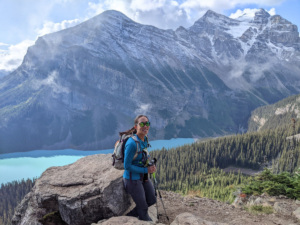 There is not an ounce (or a gram, I should say) of rudeness in Canada. Even the beavers squeak a cheerful “Hello!” and wave when you hike by their lodges.
There is not an ounce (or a gram, I should say) of rudeness in Canada. Even the beavers squeak a cheerful “Hello!” and wave when you hike by their lodges.
In all seriousness, rudeness exists anywhere people exist. But Canadian politeness is real. And it’s not just politeness. My experience has been that it’s genuine empathy, a deep sense of social responsibility, and an organic sense of community. In general, it has been very interesting to observe the cultural similarities and differences between California — specifically, Los Angeles and the San Francisco Bay Area — where I spent the first 33 years of my life, and Calgary. Overall, though winters were an adjustment, the avid hiker and backpacker in me absolutely loves living here, a short drive away from the Canadian Rockies.
5. Are you on team dog, team cat, team wombat?
 I consider myself to be on team nature and therefore love all animals… except spiders. Sorry, I just can’t do spiders. I would rather lie in a bath of roaches, snakes or pretty much anything else that creeps or crawls.
I consider myself to be on team nature and therefore love all animals… except spiders. Sorry, I just can’t do spiders. I would rather lie in a bath of roaches, snakes or pretty much anything else that creeps or crawls.
I am especially on team dog. We have a 10-year-old Siberian husky and boxer mix named Zephyr. In her younger years, she was the best running and hiking partner I could’ve asked for. These days, she spends most of her time sleeping and eating the abundance of food that our two-year-old tosses on the floor — a pretty good retirement.
6. What one item do you always have in your fridge?
At the risk of sounding boring and basic, apples. Apples are great for any meal of the day, as a snack or even for dessert. They’re inexpensive and easy to find during all seasons of the year. You can eat them with cinnamon, nut butters, granola and so many other foods for quick, simple nutrition. Whenever my friends and I go backpacking, everyone else is eager to eat foods such as pizza or burgers when we return to civilization, and all I can think about is the satisfying crunch of a good apple.
Natalie Moore: 2023 John S. Carroll Journalist of the Year
Natalie Y. Moore
WBEZ, Chicago
Natalie Y. Moore doesn’t need to tell people how committed she is to news literacy education — her actions demonstrate it. A reporter at WBEZ in Chicago, the NPR affiliate, and a respected social issues journalist, Moore has been an engaged participant in the work of the News Literacy Project almost from the start.
In recognition of her efforts to inform disinvested communities and help young people better navigate a complex information landscape, Moore has been named NLP’s 2023 John S. Carroll Journalist of the Year.
“Her commitment to NLP and to advancing news literacy education — first in the Chicago region, then nationally — is remarkable. It is the kind of deep commitment and passion that this award was created to recognize and, more importantly, the kind of special contribution to which NLP owes its success,” said Peter Adams, NLP’s senior vice president research and design.
Moore has been engaged with NLP almost from the start, as one of its first journalist volunteers in the classroom in 2009. In 2010, she addressed an auditorium of students at one of NLP’s earliest partner schools. In 2018, she helped organize a NewsLitCamp® at WBEZ, in partnership with the National Council for the Social Studies.
News Literacy Project is ‘essential’
“I was drawn to the News Literacy Project as a volunteer because I thought it was necessary, and I had long thought that media literacy needed to be taught,” Moore said of her lasting commitment to NLP. “The News Literacy Project was essential when it started, and it’s essential today.”
Most recently, Adams and Moore worked together on the development of NLP’s newest lesson for the Checkology® virtual classroom. “Harm & Distrust” explores the history of racist mainstream news coverage of Black Americans to draw the larger subject the legacy of harm into focus. She also serves as the on-camera guide for the lesson.
The lesson addressed problems in mainstream news coverage that resonated with her. “I felt like my community on the South Side of Chicago and other black communities were not fairly covered by the press, ” she said, a believe that persists even now, particularly among young people. “And I thought that journalism could be a way to tell stories, like I could be part of the solution and not part of the problem.”
Moore’s reporting has tackled some of society’s thorniest issues — race, housing, economic development, food injustice and violence. Her work has been broadcast on the BBC, NPR’s Morning Edition, All Things Considered, Weekend Edition and Marketplace. And she has written several books, including The South Side: A Portrait of Chicago and American Segregation, winner of the 2016 Chicago Review of Books award for nonfiction and a Buzzfeed best nonfiction book of 2016.
Alba Mendiola: 2023 Alan C. Miller Educator of the Year
Alba Mendiola
Cristo Rey Jesuit High School
Chicago
Alba Mendiola has had an enviable career in broadcast journalism. After working in Mexico, where she was born and raised, Mendiola came to the United States and spent 16 years as a reporter at the Spanish-language news station Telemundo. Along the way, she won several Emmys.
Someone in her situation might understandably feel entitled to kick back a little. But Mendiola, NLP’s 2023 Alan C. Miller Educator of the Year, isn’t ready for that. Instead, at the peak of her career, she changed gears and became an educator. “I like journalism, and I like teaching,” she said. “Teaching journalism combined both passions.”
Five years ago, she began teaching Spanish and public speaking at Chicago’s Cristo Rey Jesuit High School, where students are bilingual and largely come from immigrant families of limited financial means. Recognizing that her students needed to better understand the news and be able to find accurate information and reliable sources online, she created a dual-language broadcast journalism class in 2021.
“One of the things I tell my students in the first class is, ‘Do you want to be informed or do you want to be influenced?’ Because they are two different things,” she said.
For many of her students, the stakes are high if they are unable to fully understand issues in the news or find reliable information.
“Because our students are bilingual, they sometimes are the ones who translate for their families. When they go to a doctor’s appointment, they translate. When there is something happening legally, they’re there. They are the source of information for their families. The consequences for them not getting the right information could potentially be a big problem,” she noted.
An educator committed to lifelong learning
Mendiola weaves news literacy concepts into the course curriculum, teaching students about quality journalism and the ethics and standards they must apply to their reporting projects. She tells them: “With power comes responsibilities. Now, anybody with a cellphone can be a reporter. You need to know the ethics of being a journalist, and if you don’t, then you’re not doing good for the community.”
Students learn foundational concepts of journalism and news literacy through NLP’s Checkology® virtual classroom, including understanding how bias can slip into news coverage and recognizing their own and others’ biases. The course also broadens their perspectives about their place in the world and what they can achieve.
And Mendiola is an ideal role model to instill an appreciation for continual learning. In May, she graduated from the University of Illinois at Chicago with a Master of Arts in teaching.
Taylor Sticha, senior manager of strategic engagement at the school, said Mendiola gives students opportunities they otherwise wouldn’t have, while teaching practical and essential skills. “Working with students in class and through extracurriculars, Alba is demonstrating the importance of news and media literacy and ensuring that Cristo Rey students understand the importance of these skills and can apply them to their daily lives.”
For Mendiola, it’s all about the joy of teaching and learning. “The thing I love about teaching journalism is to see my students’ reactions when they learn something new. You plant a little seed and then you just let the seed grow.”
Ana Sesma: 2023 Gwen Ifill Student of the Year
Ana Sesma
Mill Creek High School
Hoschton, Georgia
When given the choice of researching a difficult topic or an easy one, Ana Sesma, a senior at Mill Creek High School in Hoschton, Georgia, always chooses the toughest option.
Erin Wilder, her English Language Arts teacher, said this trait is one of the reasons why Sesma stands out among her peers and why she nominated her for the 2023 Gwen Ifill Student of the Year Award.
As part of a regular news literacy assignment, Wilder’s students pick a topic and analyze articles about it. Earlier this year, Sesma decided to read about the recent mass shooting at Michigan State University. “Choosing to read about such a heavy topic when lighter and more insubstantial articles were available shows an understanding of not just its importance, but of the global nature of the story as well,” Wilder said.
In other classroom activities, Sesma also pursued studying complex issues. For example, she evaluated articles that connected teens’ financial status to their mental health and posed thought-provoking questions to classmates, demonstrating her concern for her peers and awareness of issues in the world beyond her high school.
The impact of online culture on young people is one of those issues. “Social media’s pretty toxic for body image and for mental health,” she said. Viral posts create unrealistic expectations, and “it’s really easy for you to spiral down that hole.”
A responsibility to put news literacy skills to use
Sesma knows that news literacy skills help her navigate an often-confusing information landscape. “I believe it is my responsibility to take these lessons and apply (them) to all the media I am consuming, so when I am trying to learn more, I have nearly all perspectives on the topic.”
Lessons in NLP’s Checkology® virtual classroom have given her the ability to determine the intent of different kinds of information, recognize bias in news coverage, better understand the role of algorithms in determining what shows up in her newsfeed and realize when she has been fooled by misinformation. “I’ve definitely reposted things that I didn’t fully look into, and I was like, “Oh, that’s not entirely true. Let me go delete that post, or let me go correct it in another post,’” she said.
It’s important to her that she not be part of the misinformation problem. “Being able to understand and recognize the techniques and skills in media prevents me from falling for the same tricks,” she said.
And she would like to see everyone gain the skills she’s acquired. “I would hope when people are looking at posts or looking at any media, that they take a second to critically think and take a second to say, “Okay, what is the truth in this?’”
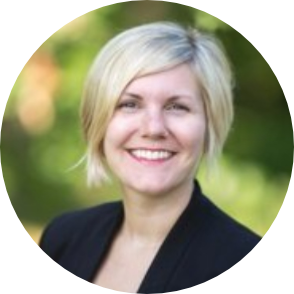 “In terms of finding out what’s on the ballot, the actual government website and the mail are the two biggest ways that people are going to find it.”
“In terms of finding out what’s on the ballot, the actual government website and the mail are the two biggest ways that people are going to find it.” “There is a responsibility to vote, but there’s a greater responsibility to be an informed voter.”
“There is a responsibility to vote, but there’s a greater responsibility to be an informed voter.”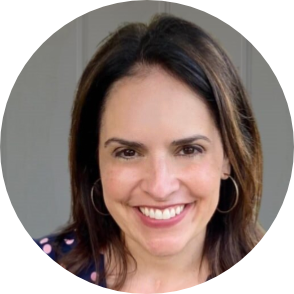 “Diversify your sources. Go to the person’s website to see what they have to say.”
“Diversify your sources. Go to the person’s website to see what they have to say.” 6. Are you on team dog, team cat, team wombat?
6. Are you on team dog, team cat, team wombat? 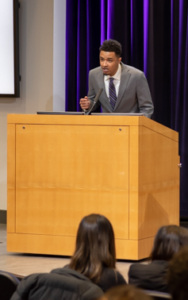 1. What led you to the news literacy movement?
1. What led you to the news literacy movement? 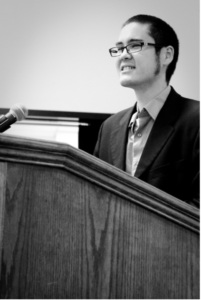 1. As a NewsLitNation ambassador, you clearly are committed to news and media literacy education. What drives that commitment?
1. As a NewsLitNation ambassador, you clearly are committed to news and media literacy education. What drives that commitment? 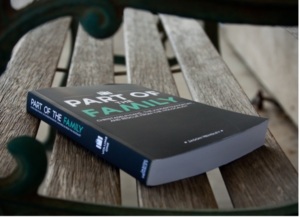 5. Aside from fighting for facts, what else are you passionate about?
5. Aside from fighting for facts, what else are you passionate about? 6. Are you on team dog, team cat, team wombat?
6. Are you on team dog, team cat, team wombat? 